During my stay in Lexington, I am working my way through all the Columbia-area museums. This week, I visited the Lexington County Museum, a collection of 30 historic buildings relocated to a 6.5-acre campus. All of the structures were built between 1770-1860. It’s only $5 for a guided tour, and on my Wednesday visit, I was the only one there. My guide John was enjoyable to talk to, and it was a great way to spend an hour on a beautiful day.
Hazelius House
Your tour starts at the Hazelius House, built in 182o. In 1834, it was purchased and expanded by the new Lutheran Seminary for professor Dr. Ernest Hazelius. It’s also the location where Charlie Tilman transcribed the hymn “Old Time Religion” in 1891. (He didn’t write it himself – he heard the local black population sing it at a revival. He was the first to write it down on paper.)
The Hazelius House is now used as the tour office and other administrative offices. The one room you can tour has two faux-marble mantelpieces and a few quilts from their large folk-art collection. Also, I don’t quite remember the connection, but there are two Audubon prints – I think he married into one of the families of the house.
Corley House
Next is the Corley House, a frontier cabin built in 1771. The deep porches and open logs kept the house cool in the summer, and they would hang furs up inside during the winter. It’s a cozy little room with a kitchen side and a bedroom side, and it’s all authentically outfitted as if the family just left. There’s an upstairs where children would have slept – because it wasn’t tall enough for an adult to stand up. In 1790, nine people lived in this house! Small windows would have protected against thieves in the night.
The land the Corleys owned is basically where Lexington stands today.
Oak Grove Schoolhouse
Across the way is the Oak Grove Schoolhouse, ca. 1815. This one-room schoolhouse would have taught the sons and daughters of the agricultural community, taking breaks only to work in the fields. Inside is a schoolmaster’s desk, a table with quills for the older students, and a backless bench for the younger ones (so they didn’t fall asleep.) Writing slates with chalk are along one wall while tiny lunch pails line the other, right next to the time-out stool.
A small natural history display lines the large fireplace mantel – a seashell, a bird’s nest, a hornet’s nest, etc.
Koon House
Next to the Corley House is the Koon house, the 1810 cottage of Daniel Koon, a father of 14 kids and a faith healer. You can tell how pioneer construction has changed since the Corley’s cabin was built. The Koon House has milled wood walls, a full second story, and large windows with glass.
We couldn’t enter the Koon House because it’s being renovated, but it is frequently used for Halloween and Christmas events at the museum. (The witch-doctor/faith-healer is a great character for Halloween!)
Post Office
The Post Office is a small building (ca. 1790) used as a lawyer’s office, a doctor’s office, and finally, as a post office, mastered by a civil war widow and her daughter until 1894. The small office was moved 13 miles around 1820; it’s thought partly because George Washington may have visited it at its original location, so it had a little claim to fame.
It’s currently used as the office of the museum administrator, so we didn’t go inside.
John Fox House
The one house at the Lexington County Museum that wasn’t relocated is the John Fox House. He was a prominent member of society, serving as a plantation owner, Sherriff, state representative, senator, and held various other government positions. This large house, built in 1832, was purchased by Fox as his “town home” in 1843. His actual farm was located three miles away.
We couldn’t tour the Fox House this time, again, due to renovations (which I’m glad they’re doing while business is slow.) John said the rooms inside are pretty small, but there is a formal parlor that’s nice. There are no internal hallways but a series of doors leading to the veranda.
Wadlington Pigeon House
Apparently, pigeons were kept for food during the late 19th century. This pretty pigeon house has an octagonal structure and pagoda-style roof, proof of the influence of the west’s introduction to Japan around this time. This one was built around 1857.
Garden
There is a large garden to the side of the Fox House. It would have been planted with fruits and vegetables (or any “profitable” crop) originally, but now it is a decorative garden with avenues of crepe myrtle trees and flowers planted in the cistern.
Leaphart/Harman House
A large farmhouse behind the garden, called the Leaphart/Harman house, was built in 1800. It’s part of the official collection, but we didn’t tour it. It was damaged during the civil war, which wrecked the Leaphart family’s finances. Then the Harman family owned it from 1896-2003 before donating it to the museum.
Outbuildings
The next 15 or so buildings are support structures for a house as large as the Fox House. There’s the well, a beehive, a three-seat privy (poop with your friends!), chicken coop, potato house, summer and winter dairies – little hutches where milk and cheese would be kept cold with pans of cool water. An outdoor brick oven would work non-stop to provide bread for the household. An ash hopper was used to make lye soap. Paper mache hams hang in a smokehouse.
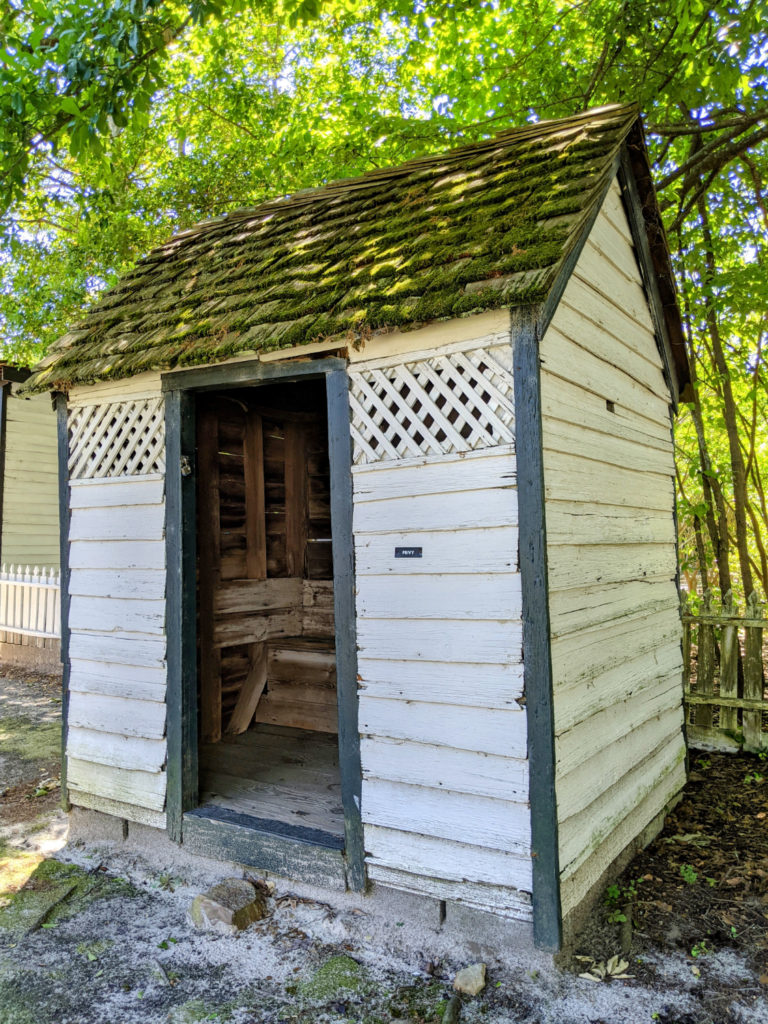
3-seat privy 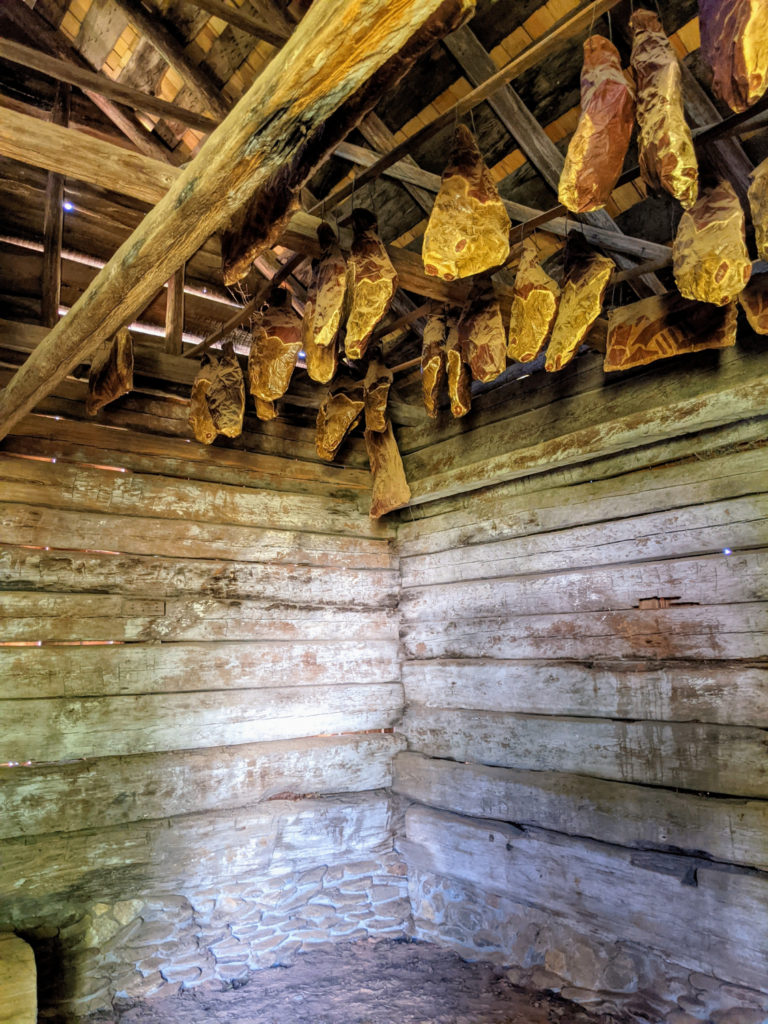
smokehouse 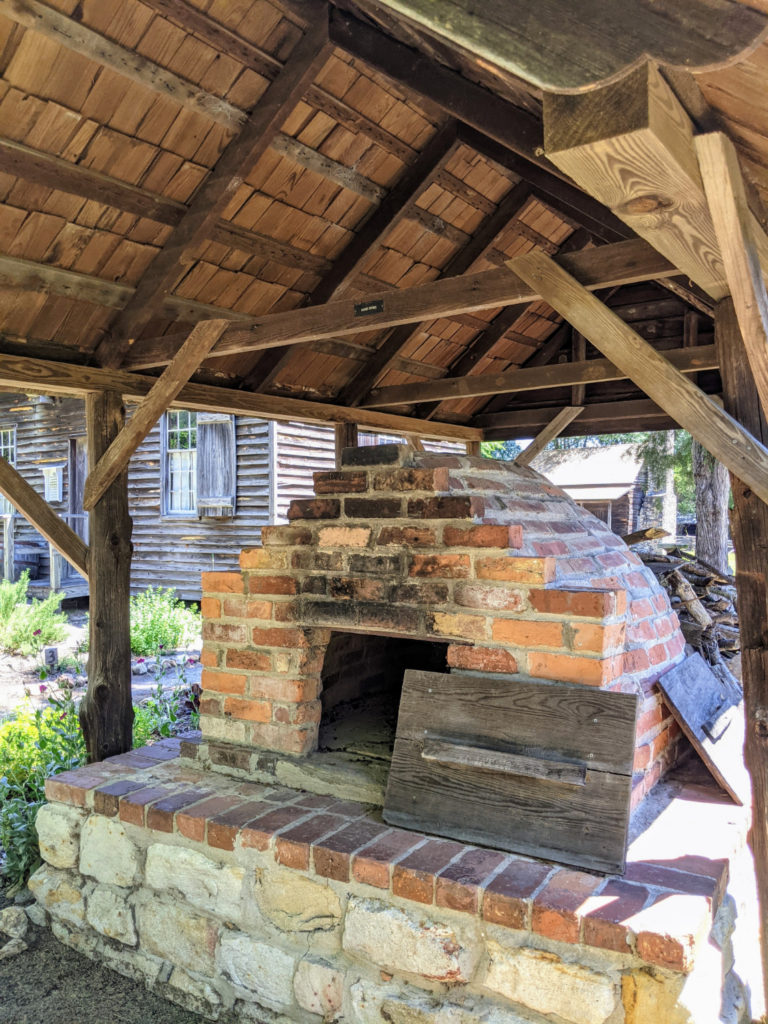
brick oven 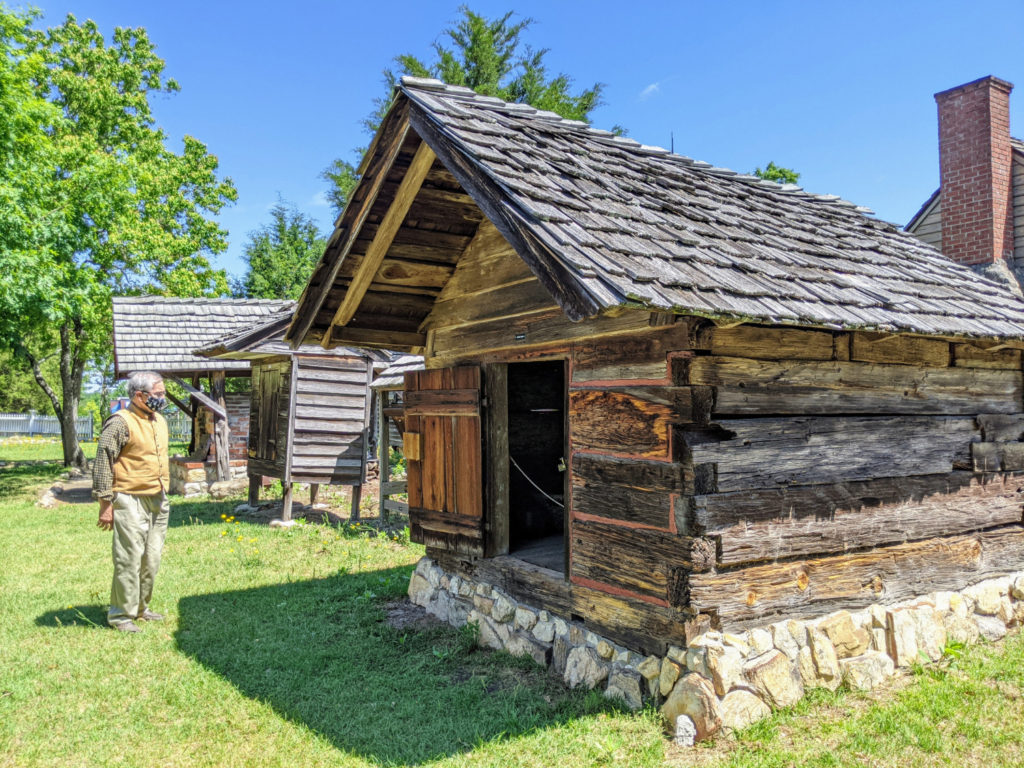
John and the potato house 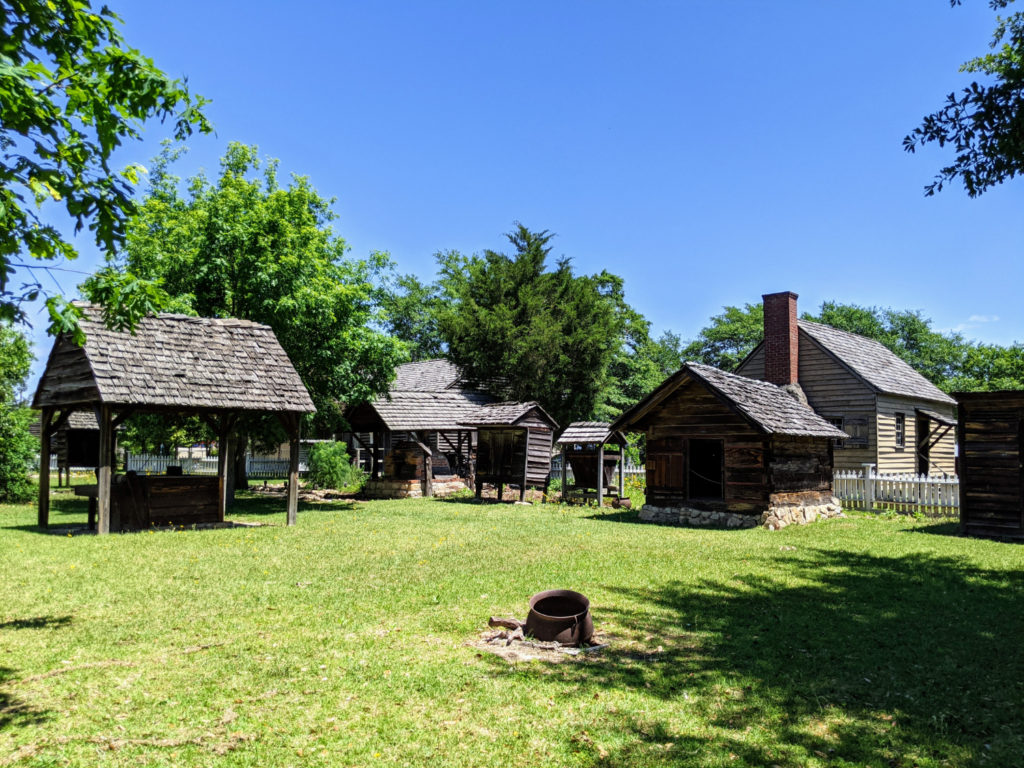
In the back is a thriving herb garden and a vegetable patch, where they grow heritage lettuces, tomatoes, beans, and more. Another patch at the side of the house is trying (and currently failing) to grow rice and flax.
Crossing into a back field, there is a carriage house (with an authentic wagon still used for special occasions) and two large barns, ca. 1850. A blacksmith’s forge is used during education days. An outdoor classroom can be glimpsed down a path in the woods. An anachronistic (meaning, it doesn’t fit the time frame) paddy wagon sits to one side. But still, a paddy wagon! I don’t think I’ve ever seen one in real life.
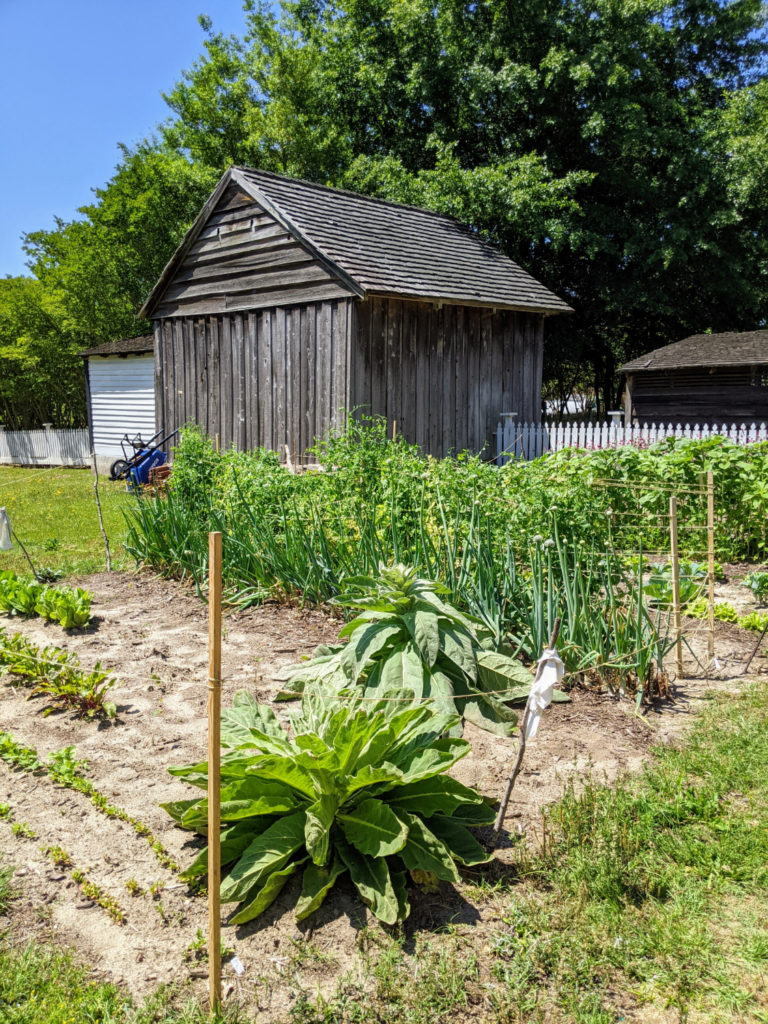
house garden 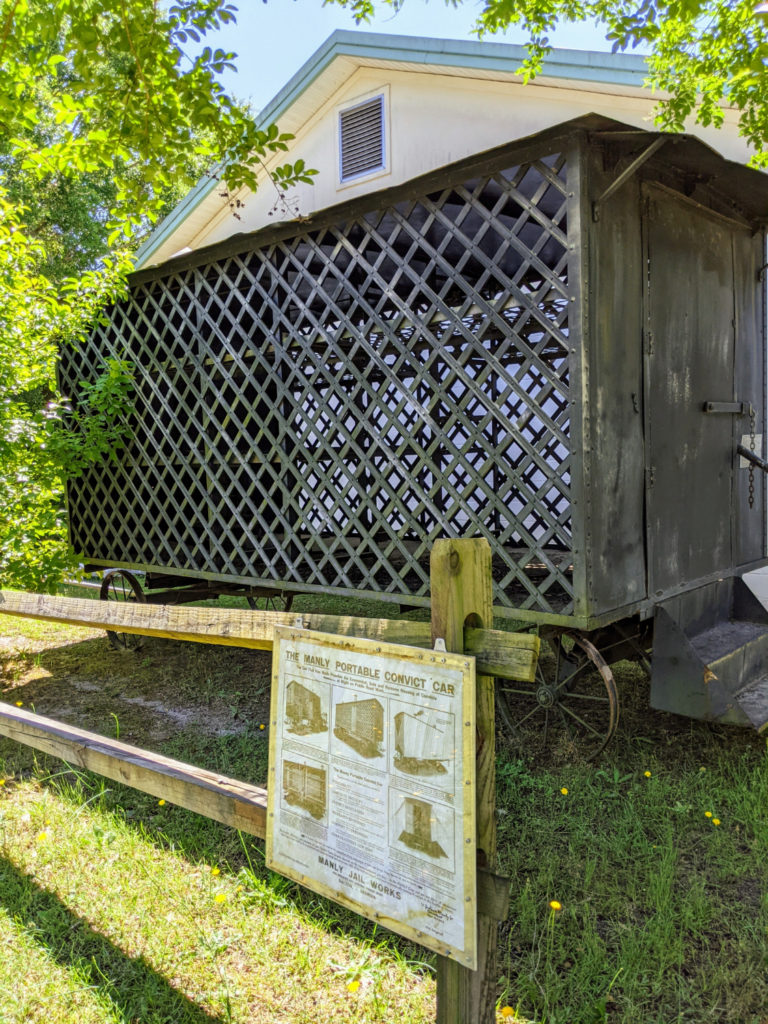
paddy wagon! 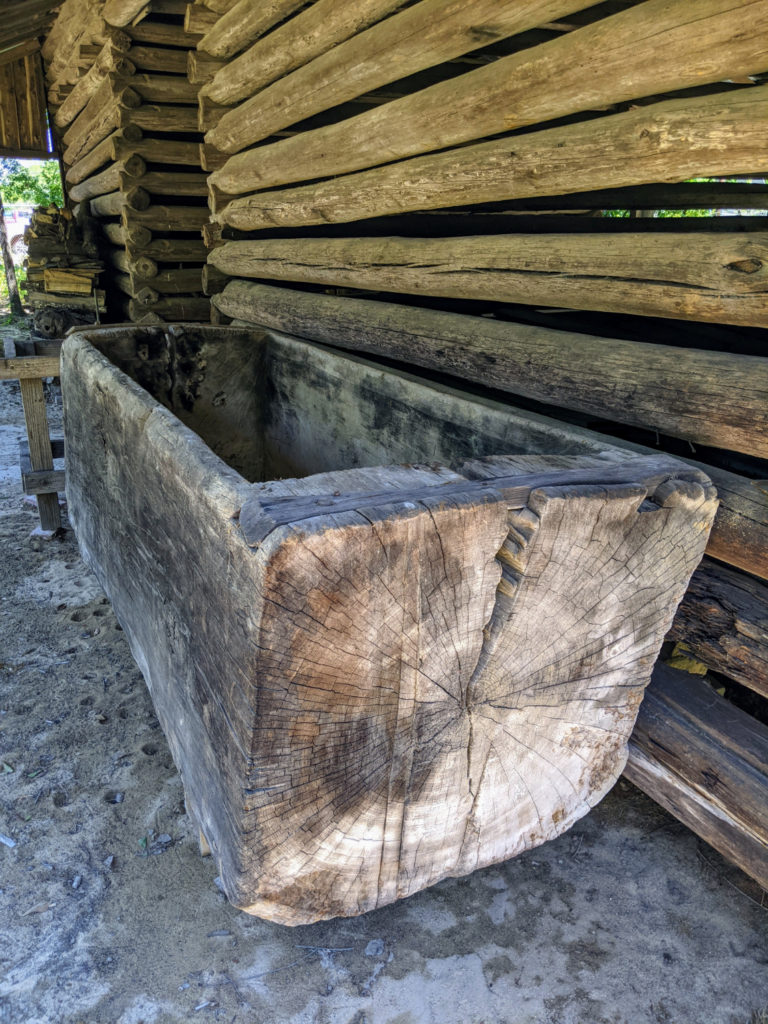
water trough 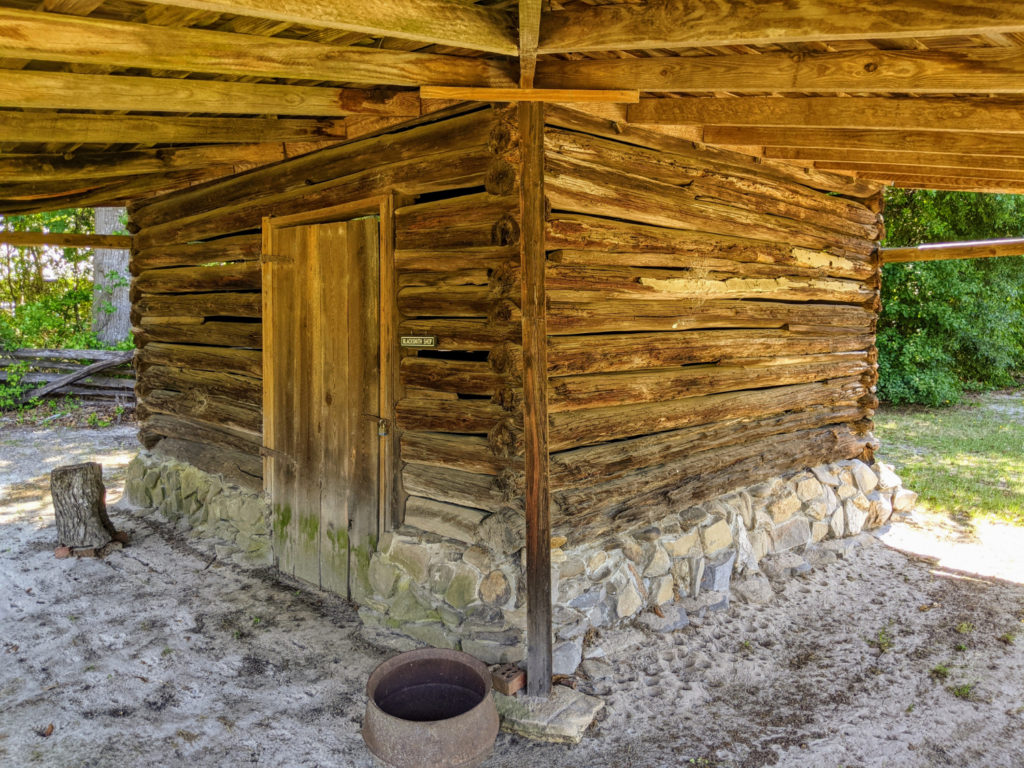
forge 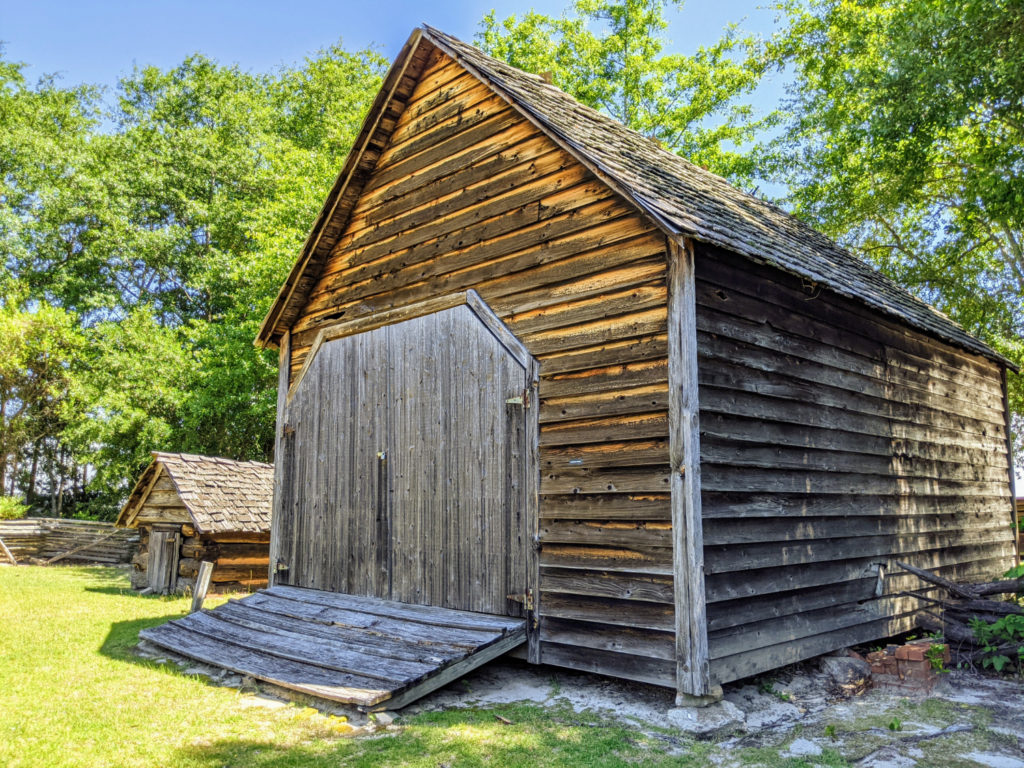
carriage house 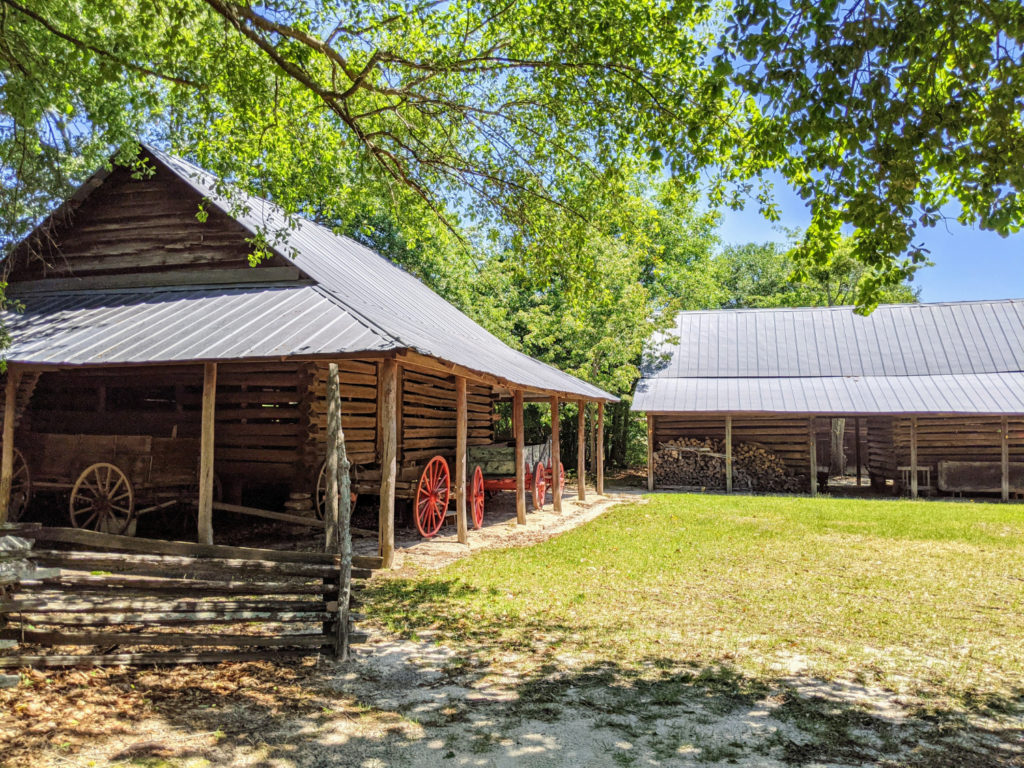
barns
Back in the corner is a slave quarantine house, a sad, low barn with tiny slots for windows and a half-high door. John stopped the tour to properly acknowledge all the unpaid labor that made the house and farm operate and how terrible conditions were for those just arriving from Africa.
Lorick Log House
Also in the back is the Lorick Log House, the oldest building at the museum, from 1770. It’s a year younger and much larger than the Corley House. We didn’t go inside – maybe it’s not outfitted with anything to see – but it has been recently re-shingled. You can see the damp and the moss growing on the roofs of the other houses, while the Lorick House has fresh, bright wood.
Cotton Gin
To one side is a large cabin on stilts, which is a cotton gin. A donkey or mule would turn the large wheel under the cabin, which would turn the gears inside, separating the seeds from the cotton. We didn’t go inside, but John said the invention of the cotton gin prolonged slavery for several more years, due to how much more cotton could be processed at a time.
A sugar cane press stands out front – a simple grinding wheel powered by a beast of burden.
Outdoor Kitchen
A large kitchen stands behind the house, separate from it in case of fire. A large fireplace and work table are at one end, while corner cabinets, Carolina pottery, and Lexington-made chairs stand at the other.
This building was also called the chapel because the slaves would gather here for Sunday church.
Loom Room
Another 1770’s cabin is set up as a loom room, with a large loom and several spinning wheels and “weasels.” Thread from the spinning wheel is wound around the spokes of the weasel, then pops after a certain number of turns, say 40. And that’s where we get the song Pop Goes the Weasel! I had never heard that before!
This room has a warm and cozy vibe, with carding paddles and baskets of cotton and flax.
Slave Houses
The last stop on the tour is an example slave house attached to the back of the Fox House. Originally, these would have been located elsewhere on the property but these rooms are set up as a representation of what they would have looked like. This particular room, with a small bed and dining table, is set up for the head cook, a 40-year-old slave named Ellen.
In real life, as many as nine people would have lived in a small room like this. John Fox owned 52 slaves as of the 1860 census. The names of the slave he owned in 1857 are listed on the wall and there are books with more details about the descendants, who still live locally.
Visiting the Lexington County Museum
The Lexington County Museum is open from 10-4 Tuesday-Saturday, and 1-4 on Sunday. During these times you can get a guided tour for $5 like I did. Right now, tours are by appointment, just call the office. And note that it’s cash or check only, no credit cards.
It’s an open-air museum, however. There isn’t a large gate that closes at 4, so there are self-guided tour brochures on the side of the tour office, and I think a cell phone tour as well. You can walk around anytime without a guide; you just can’t go inside the locked buildings as I did.
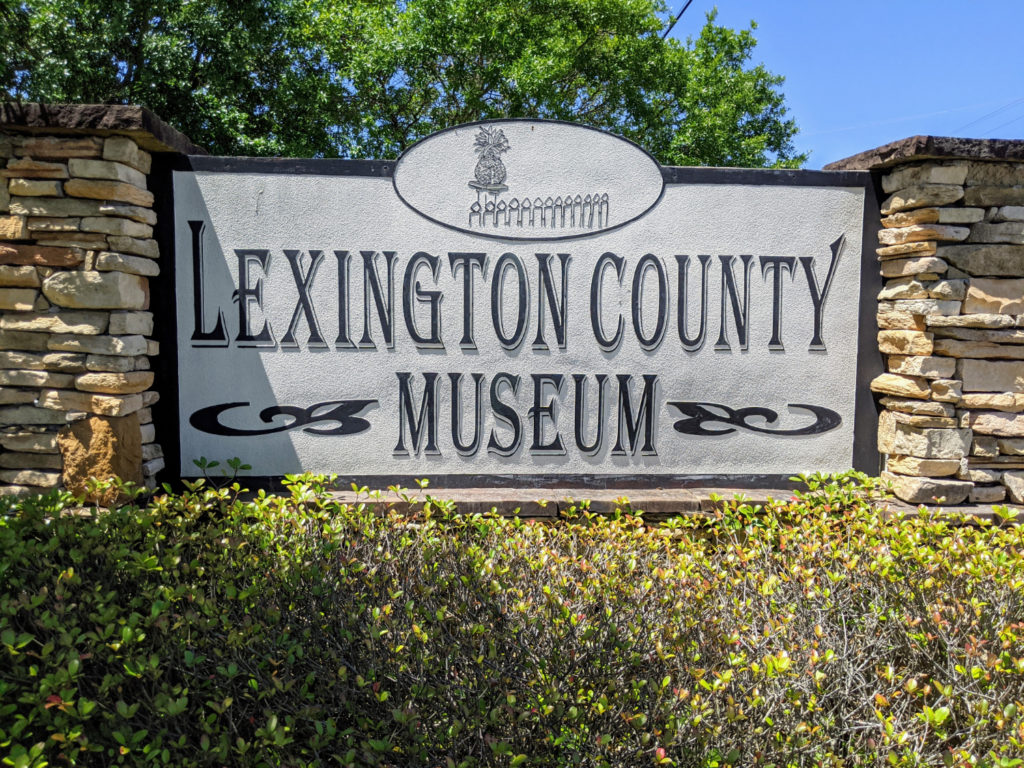
There are several educational programs, and it sounds like in normal times, school groups are regularly touring. Events are held during Easter, summer, Halloween, and Christmas, where there are storytellers and re-enactors in period clothes. They close for holidays and often the weekends of a holiday. For instance, they were closed on Easter Saturday and Sunday. And if a holiday is on a Monday, they’re usually closed all three days.
I really enjoyed it – a bit more than I thought I would. That Pop Goes the Weasel tidbit really made my day! I realize I’m probably not seeing it at its prime, as a living museum with lots of people around. But I’m definitely glad I spent the $5.
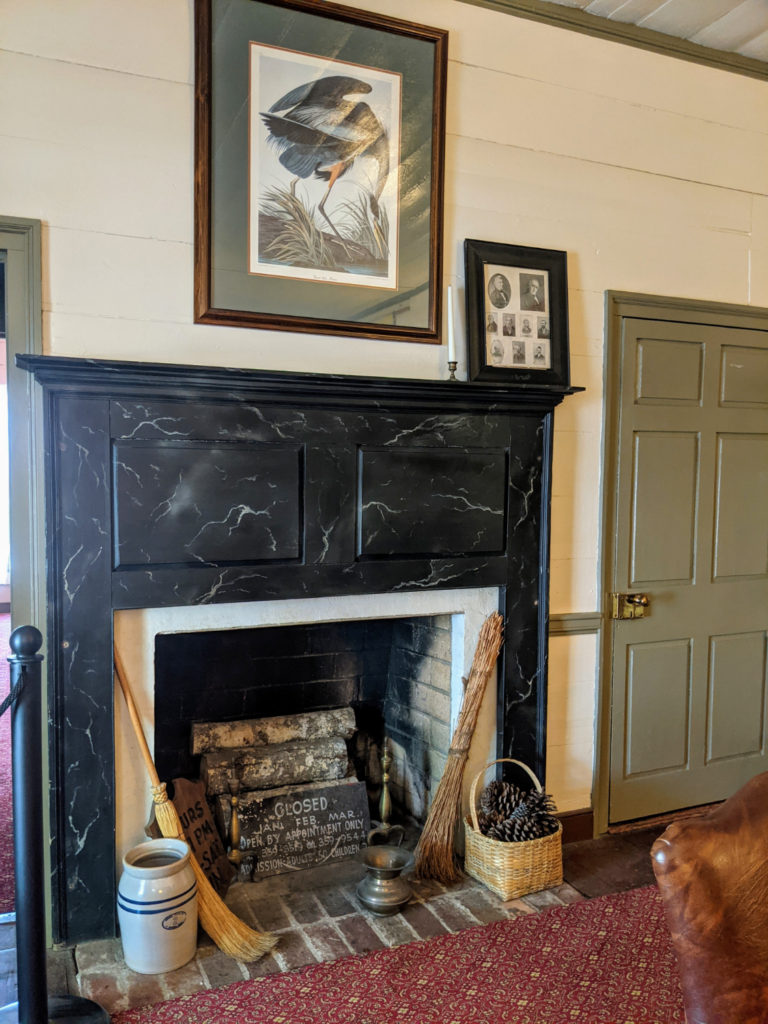
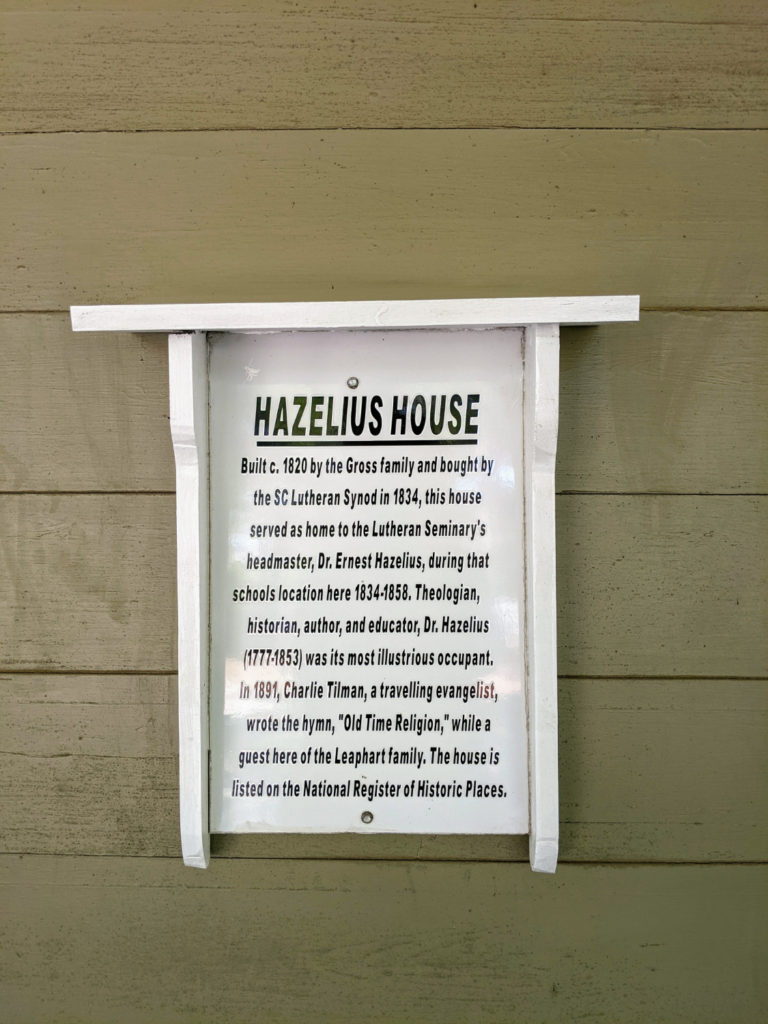
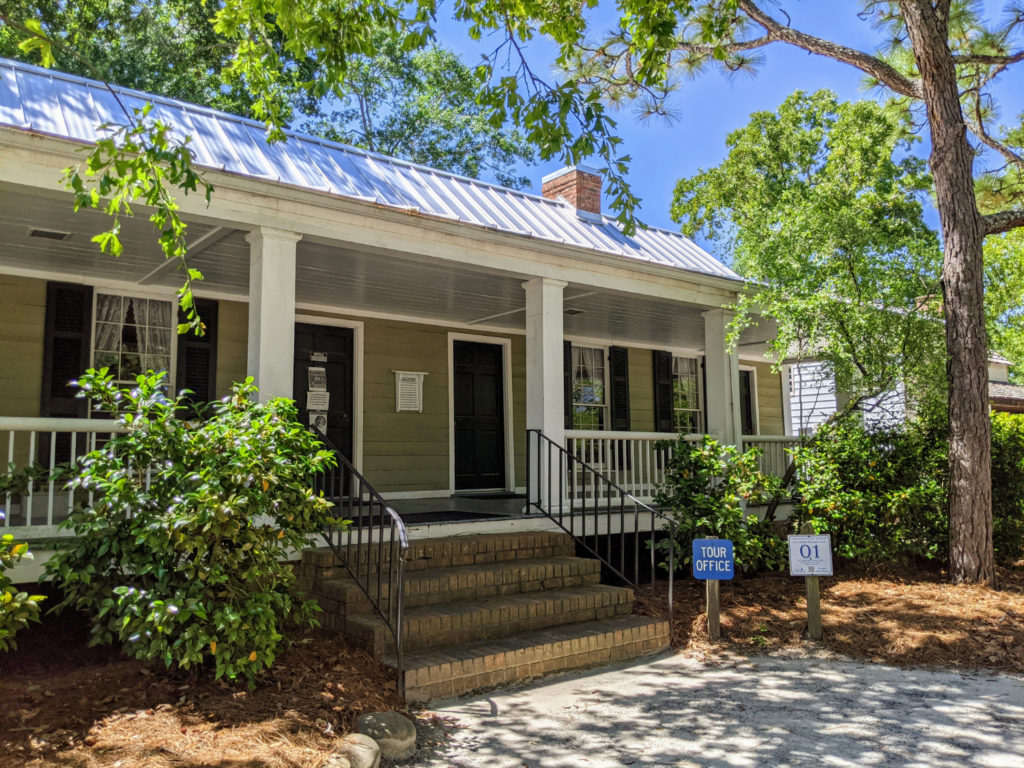
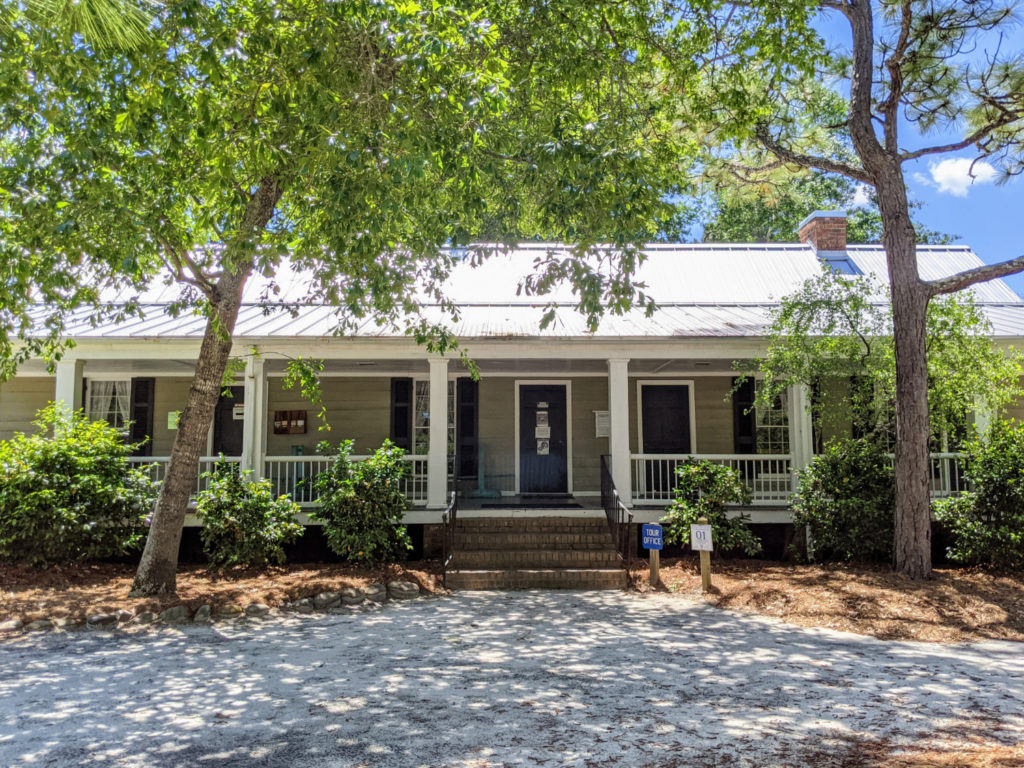
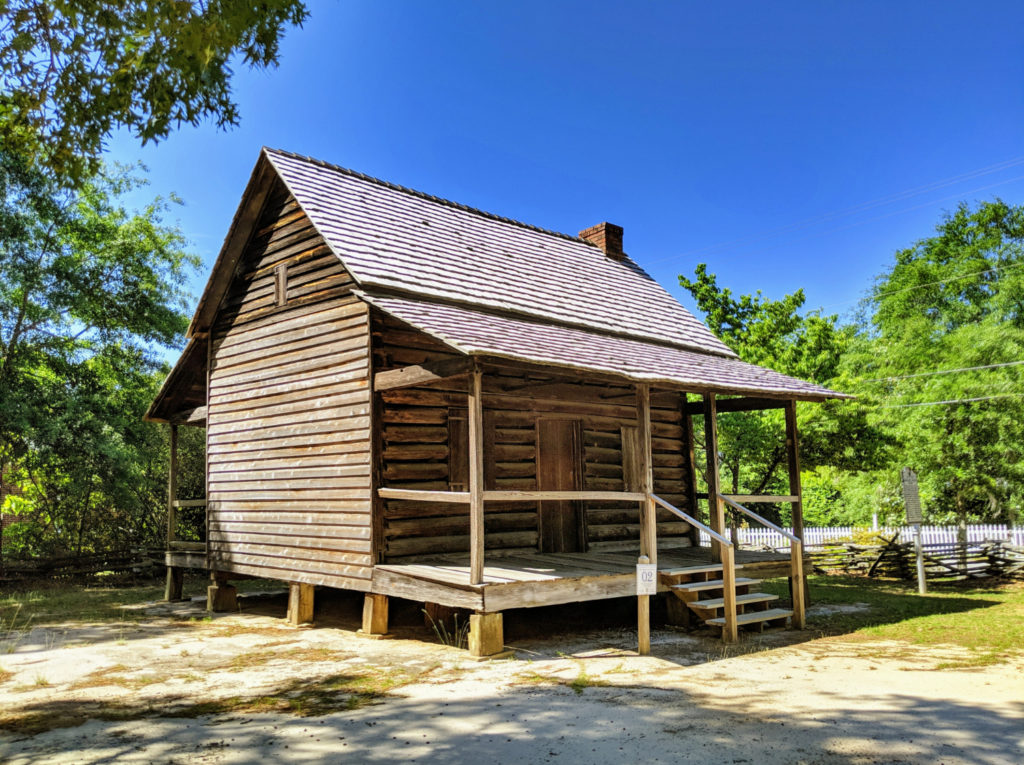
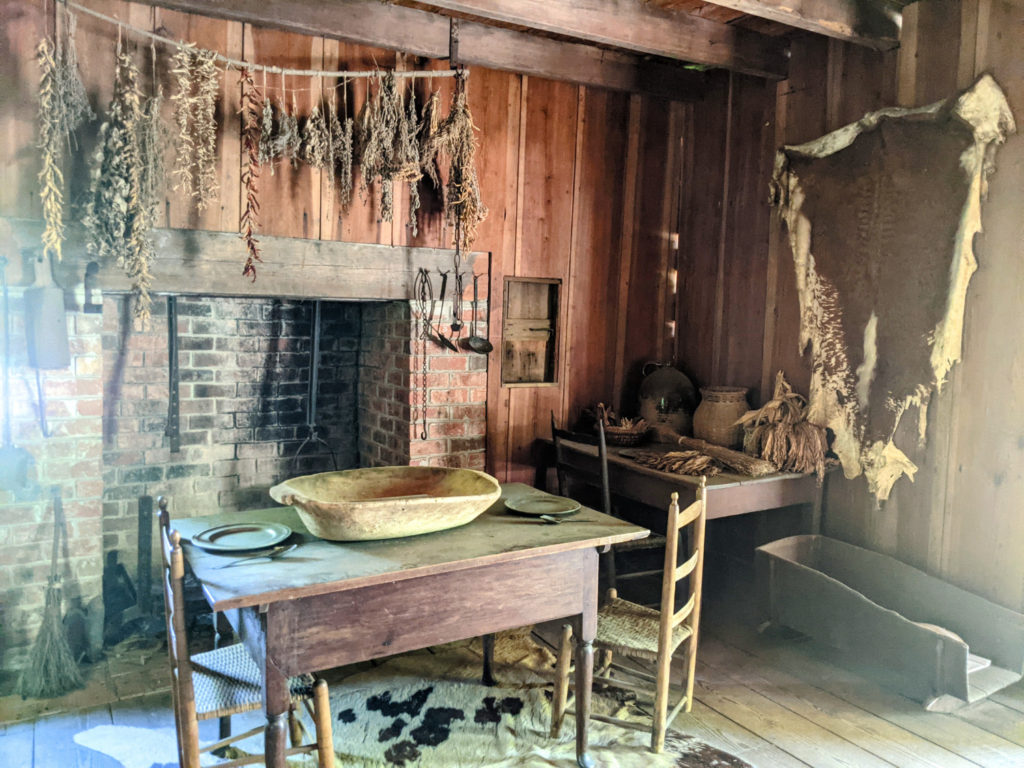
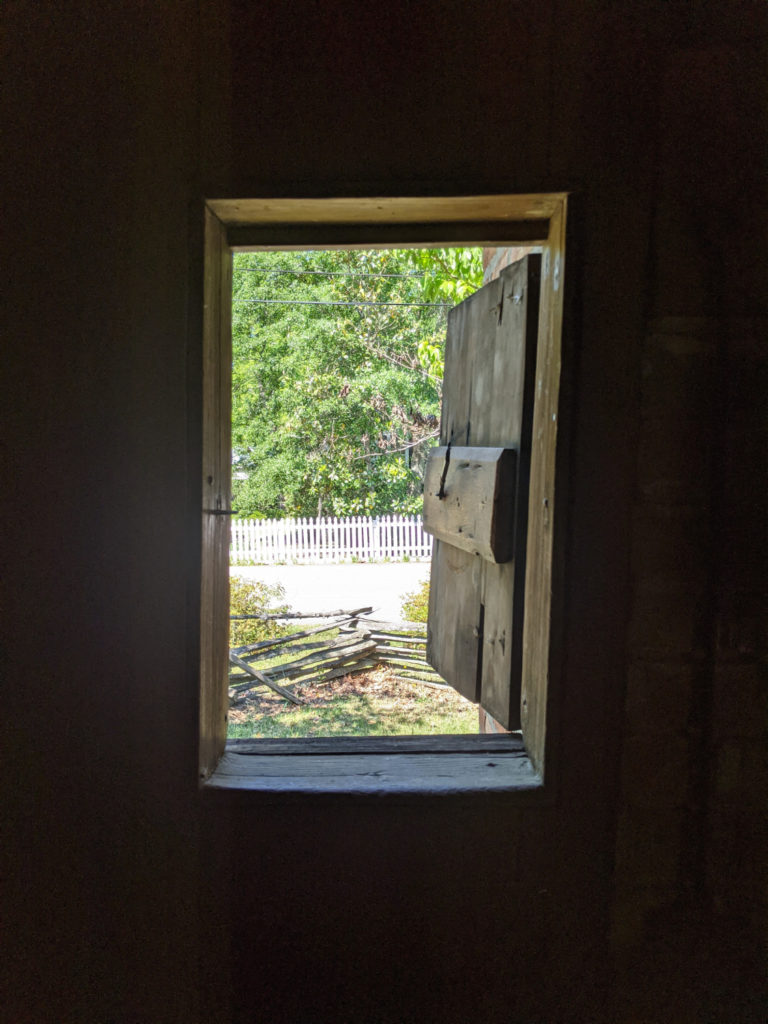
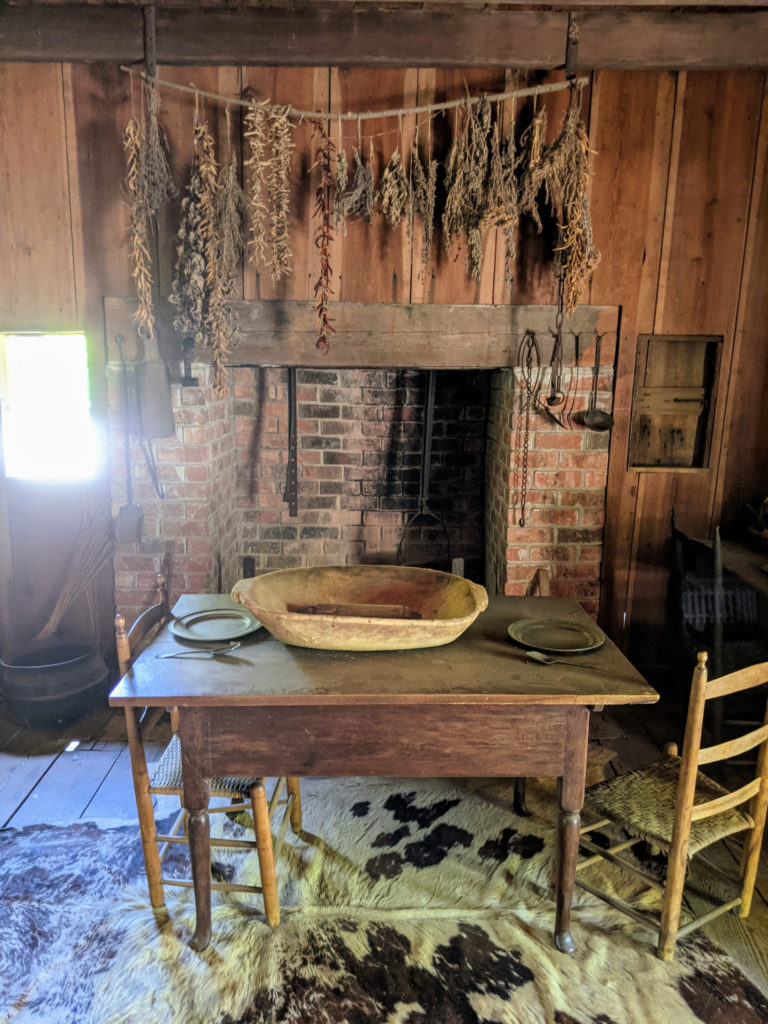
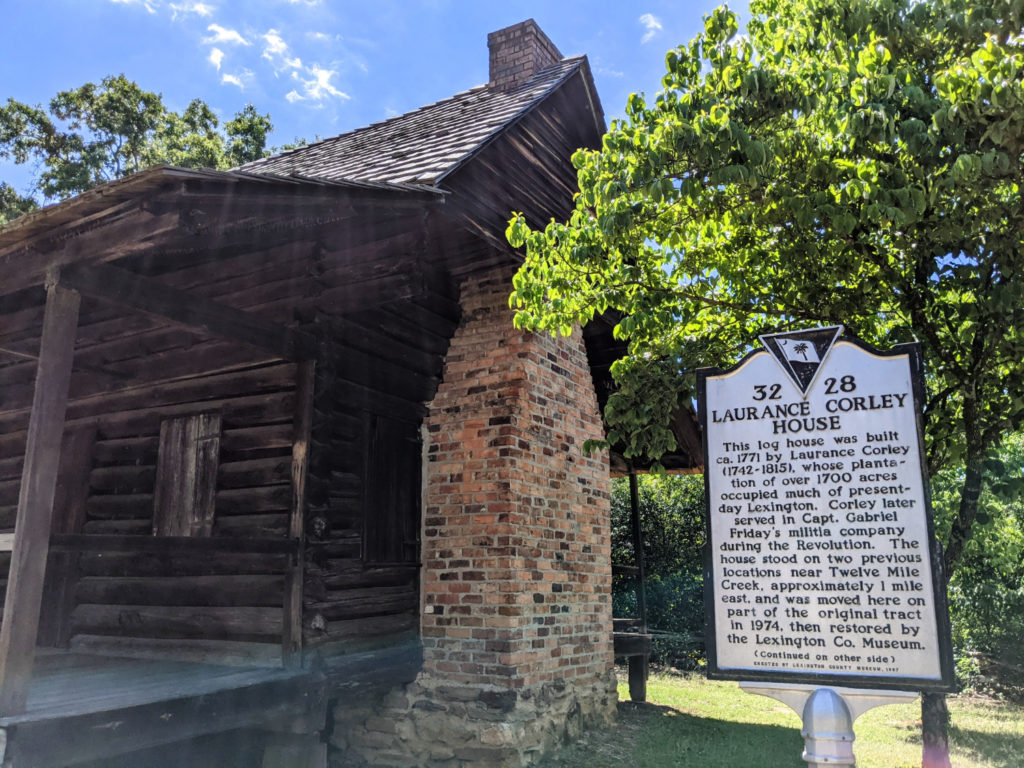
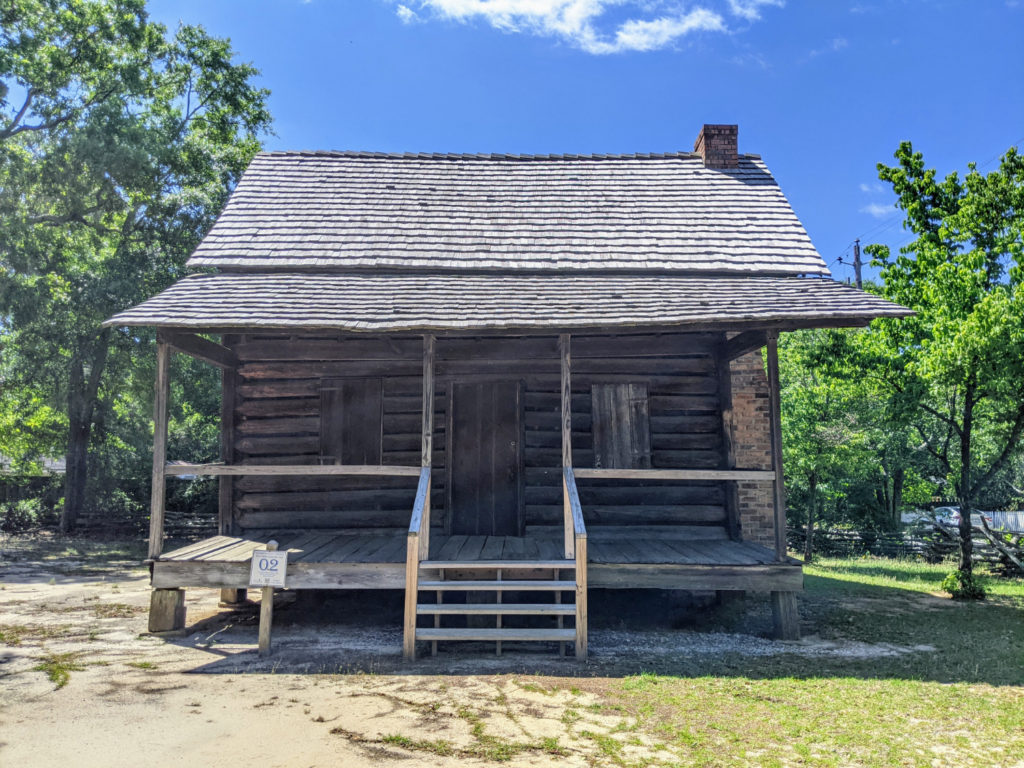
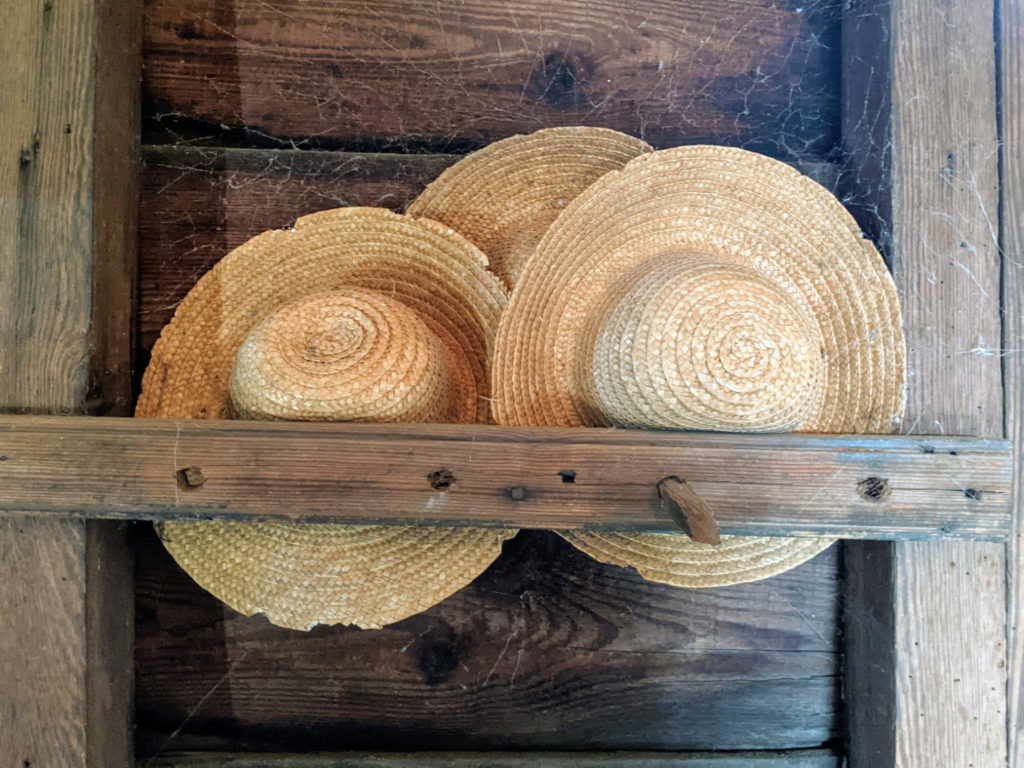
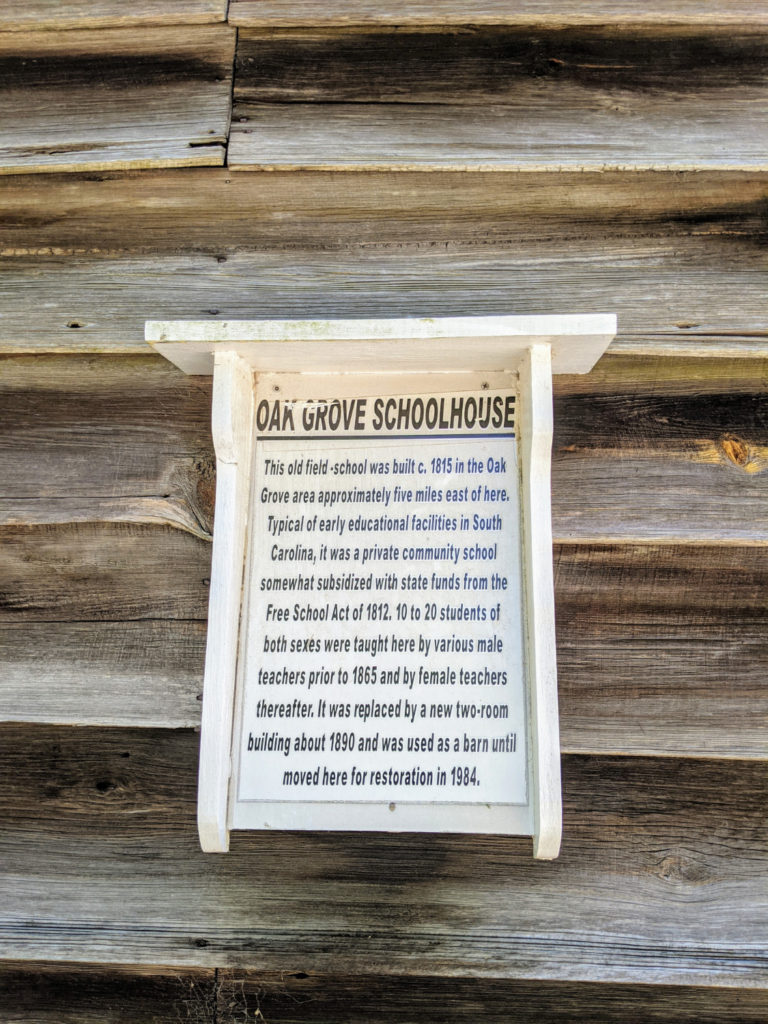
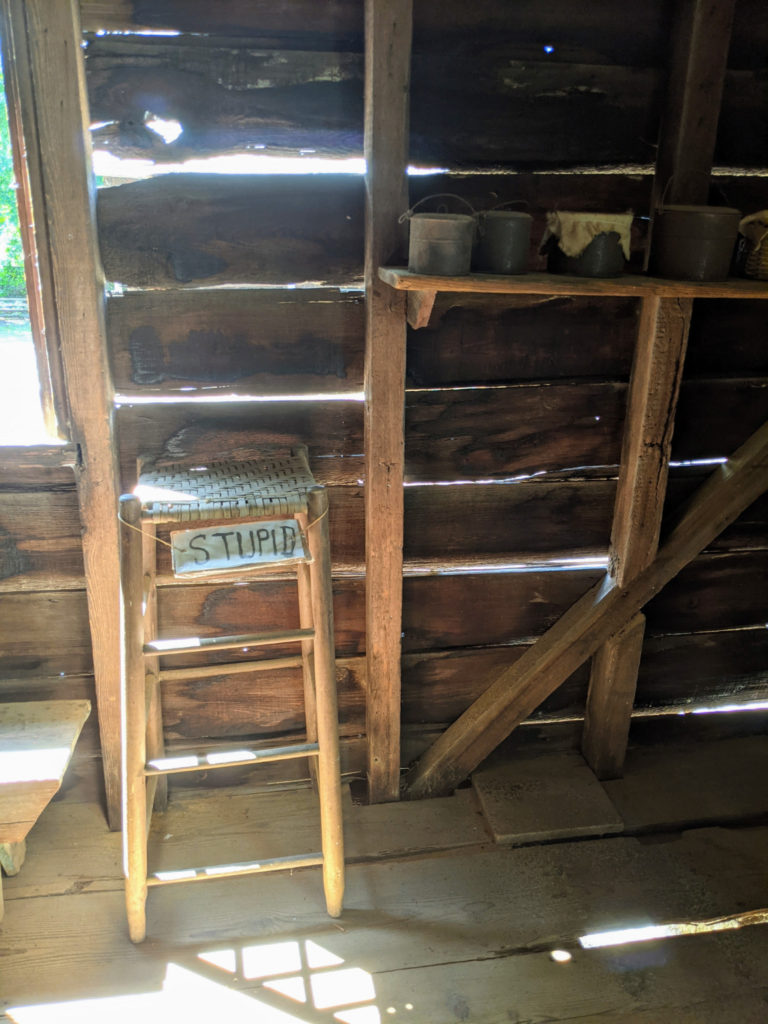
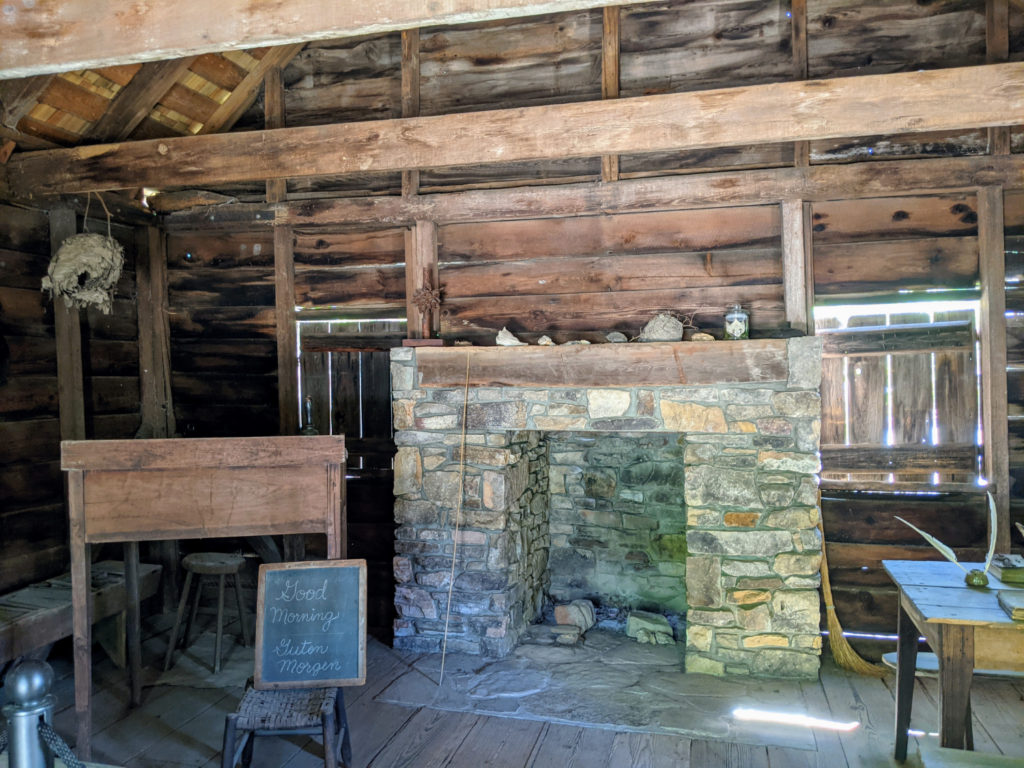
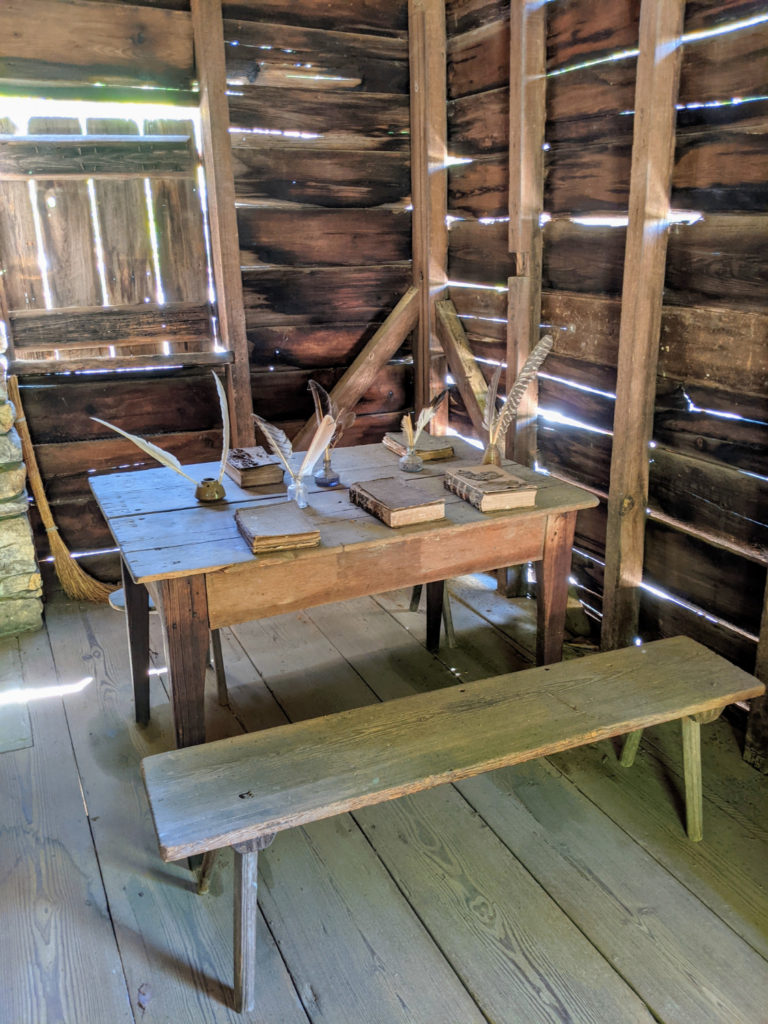
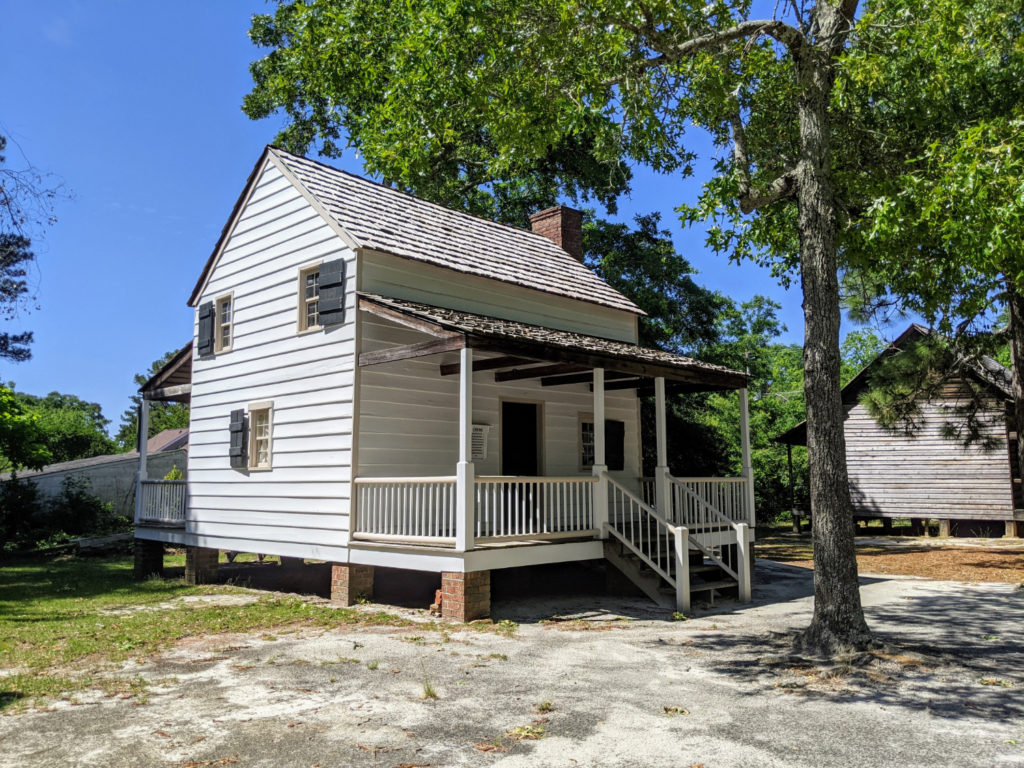
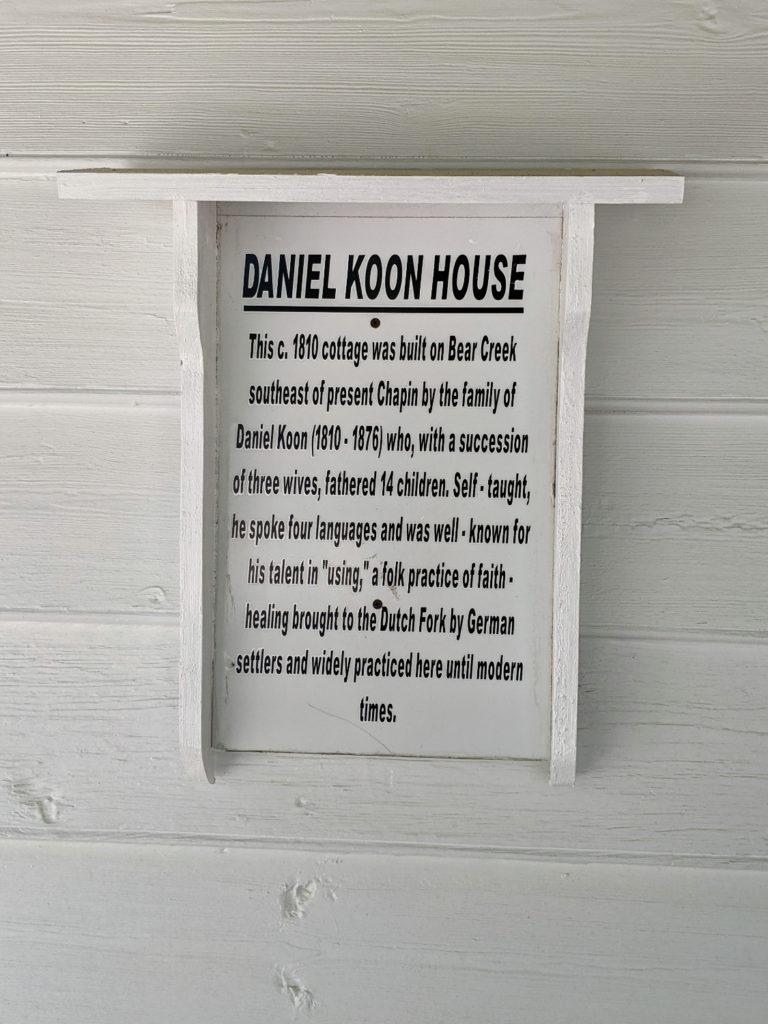
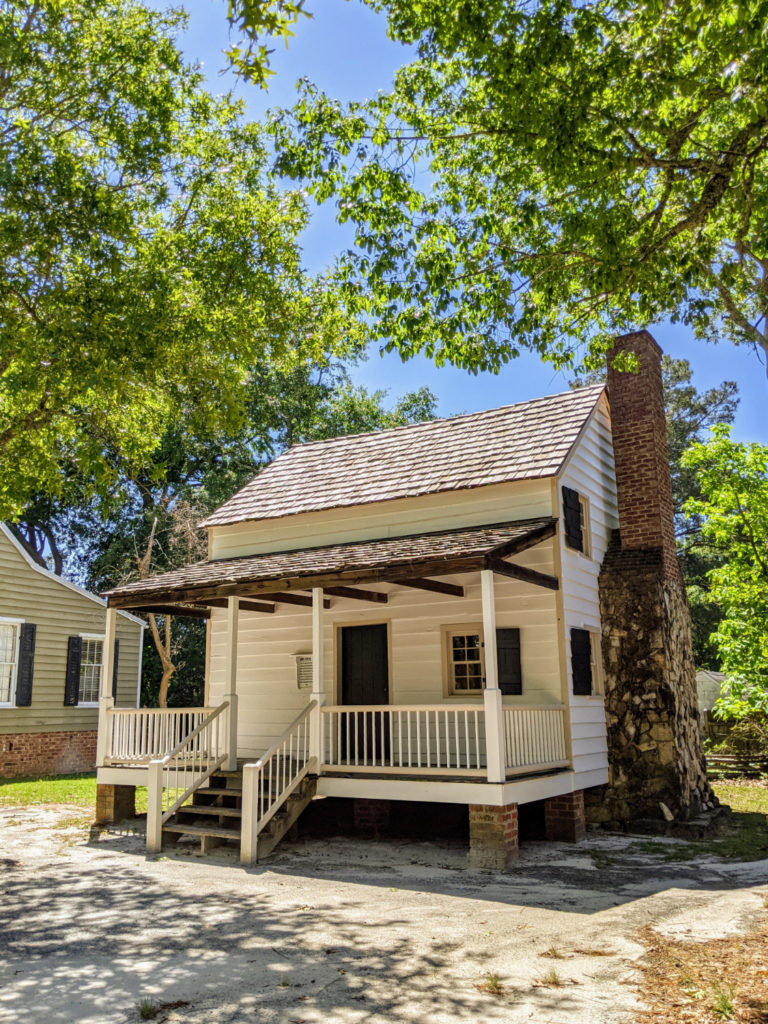
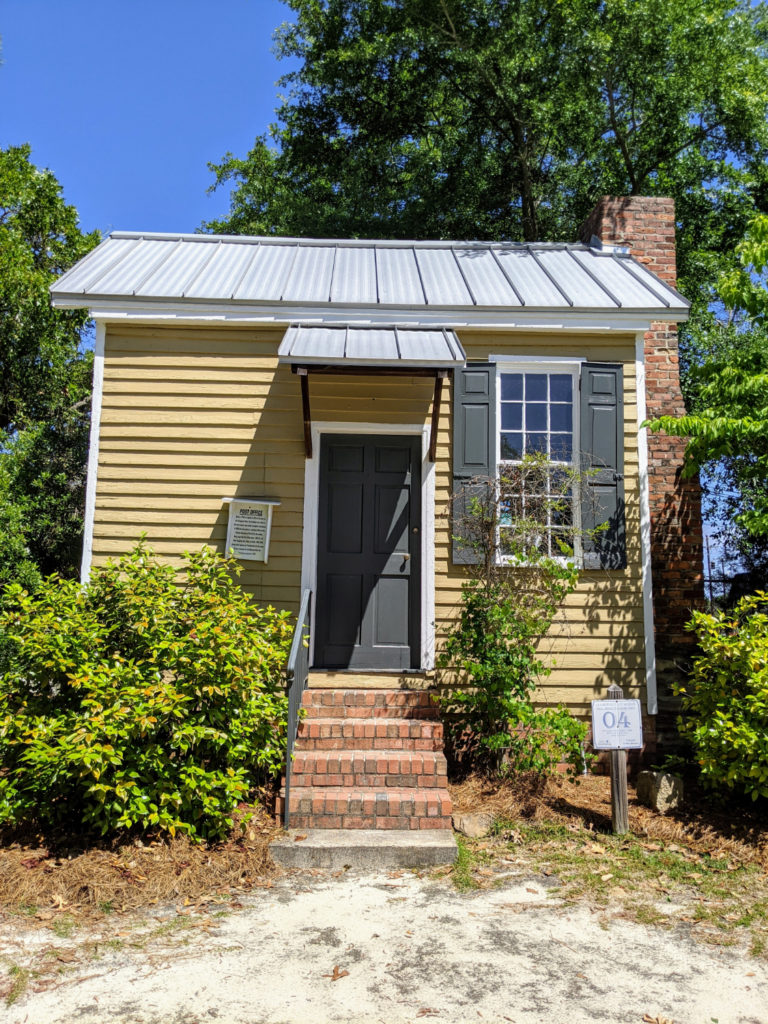
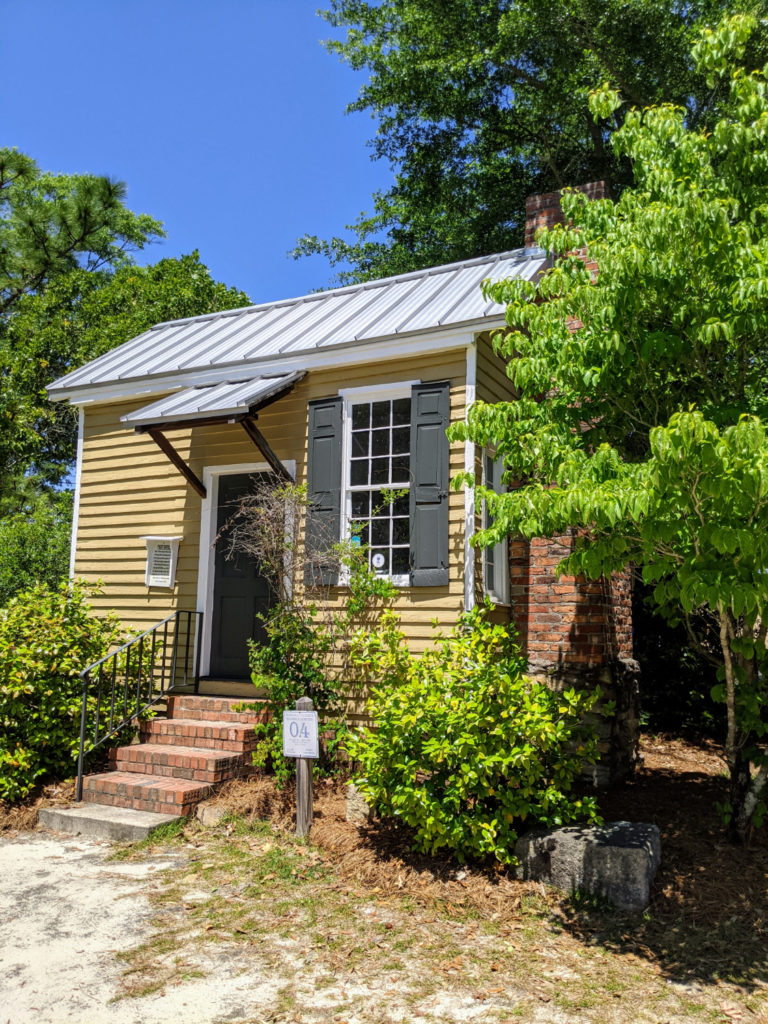
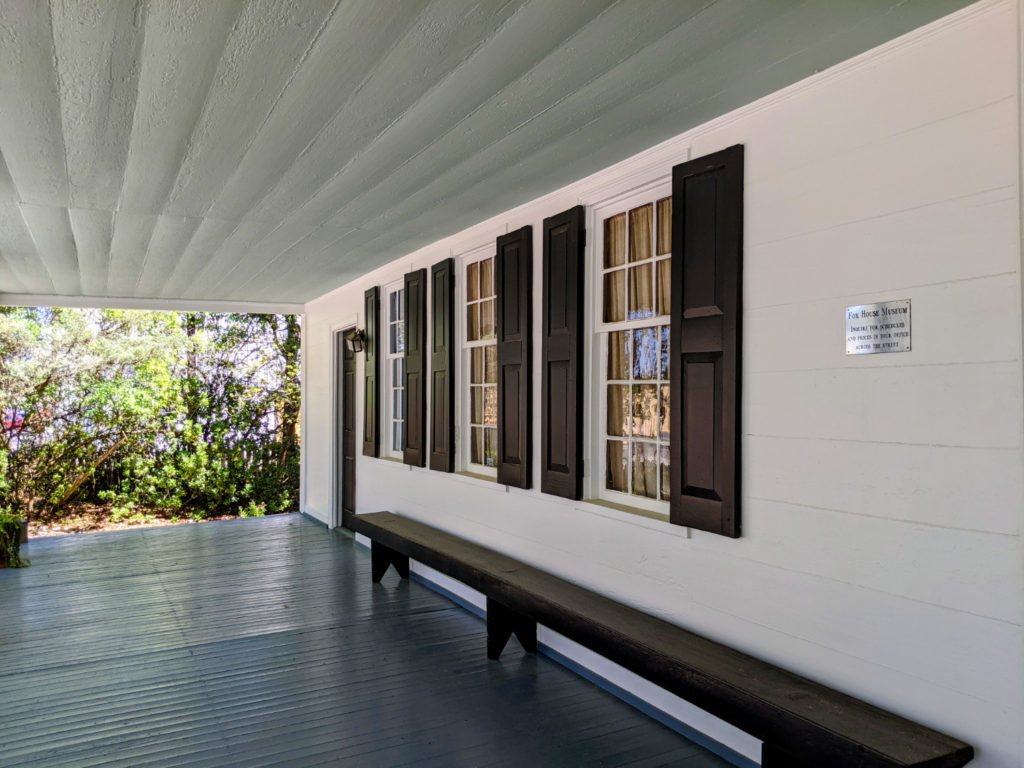
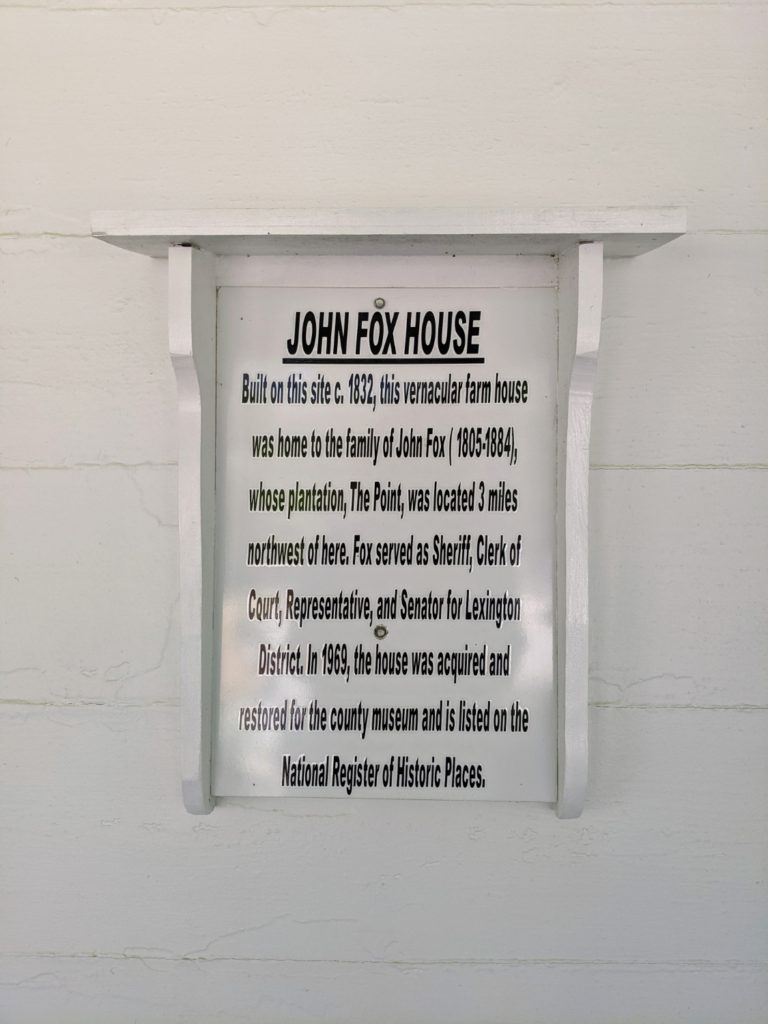
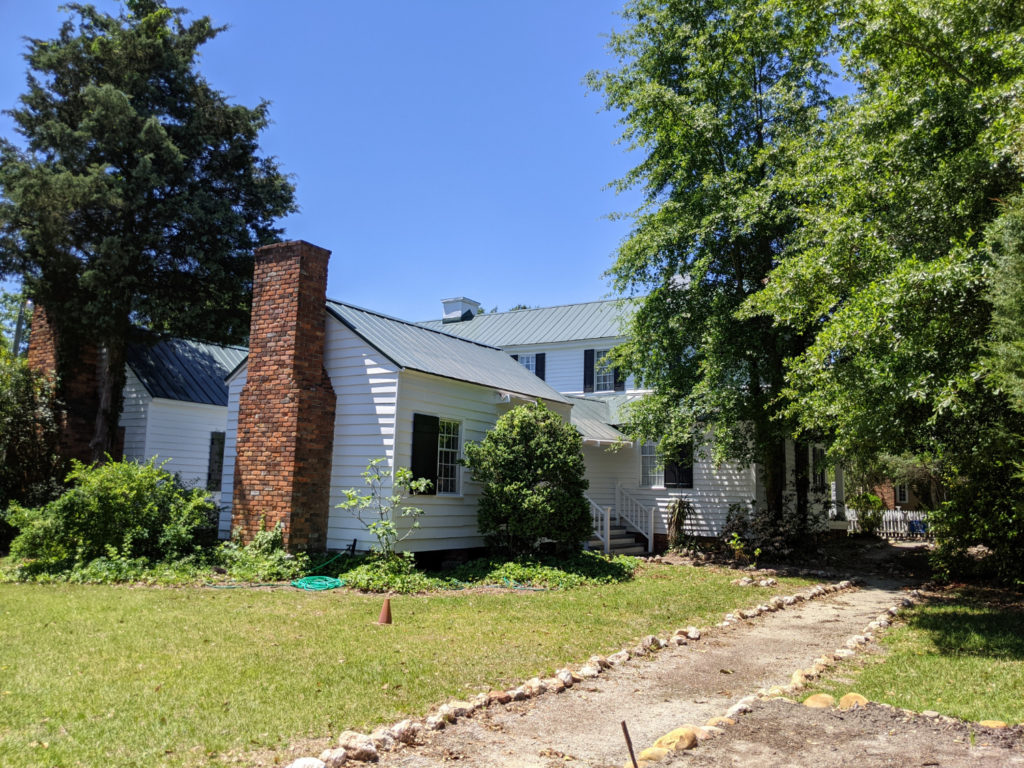
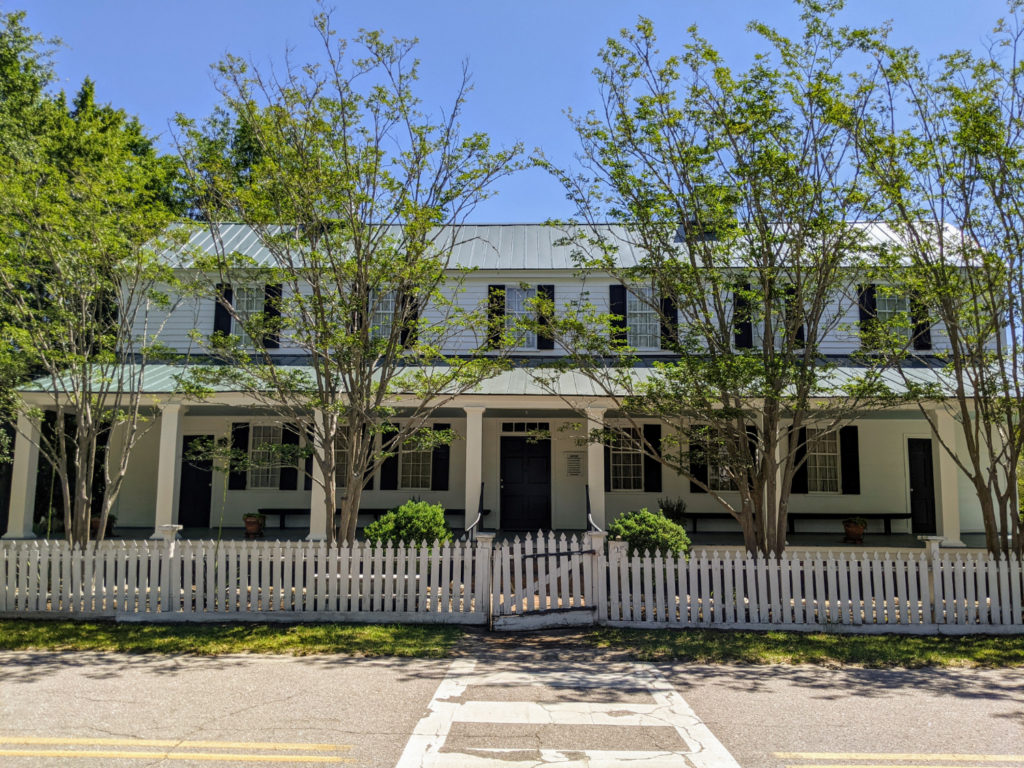
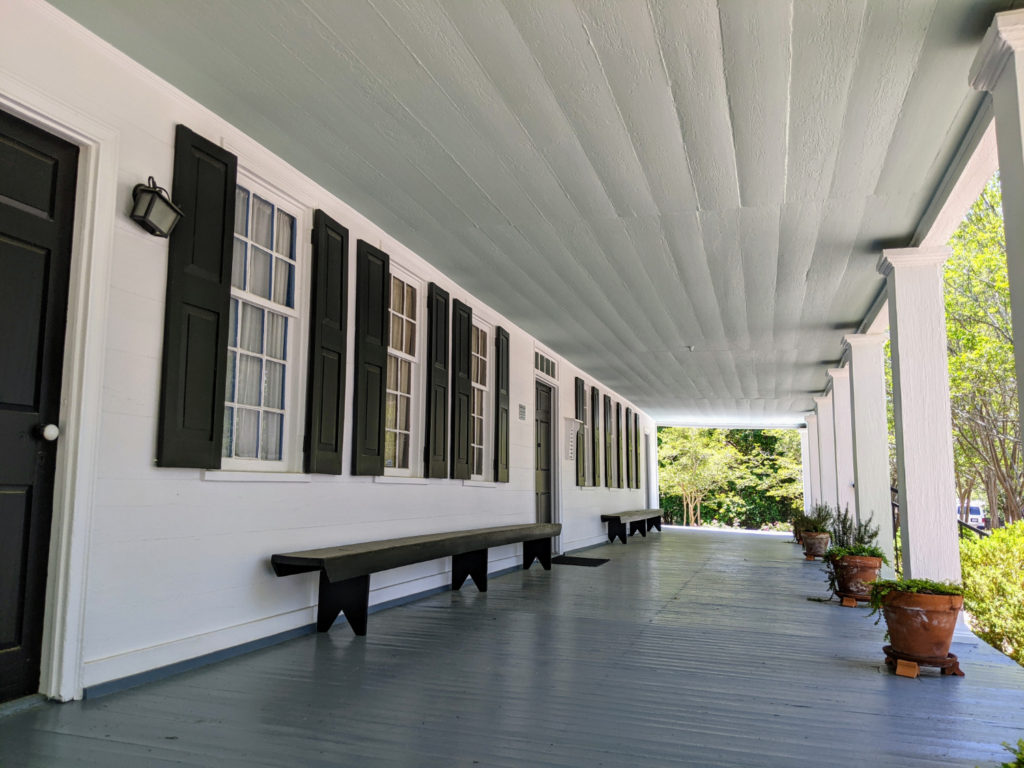
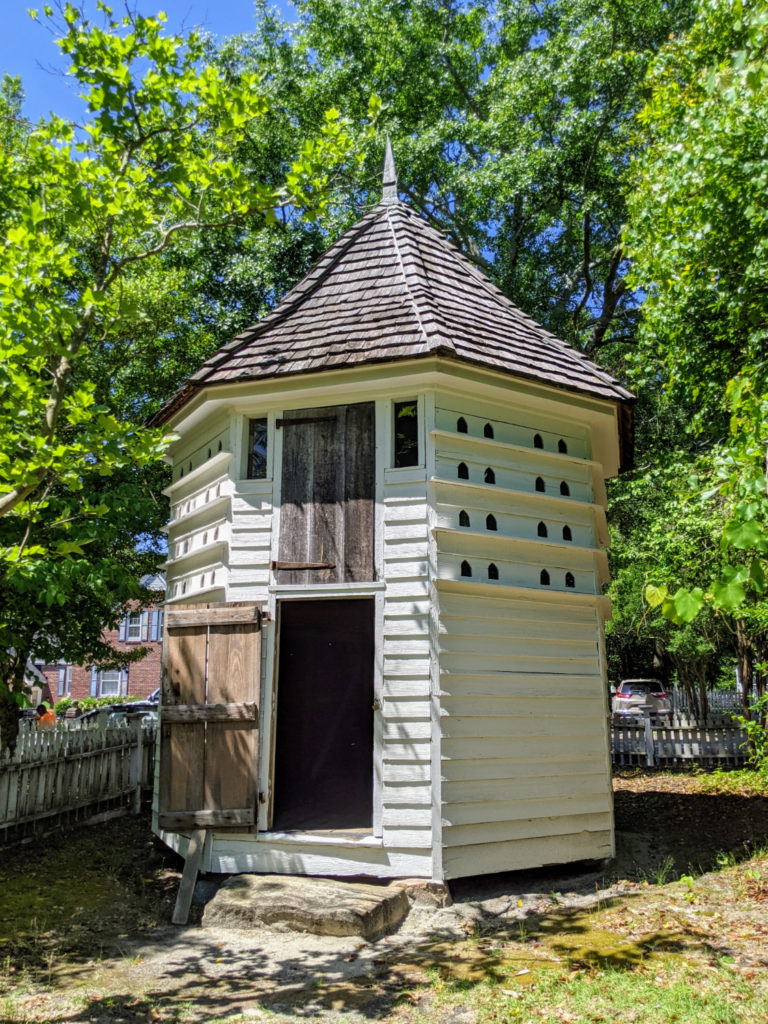
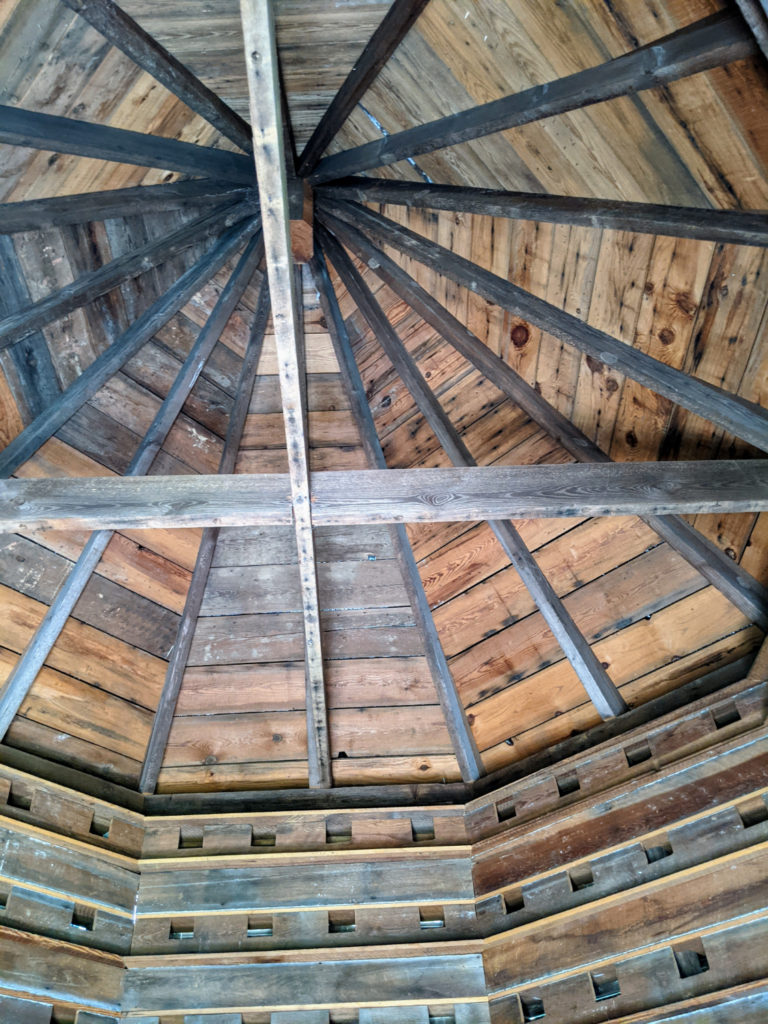
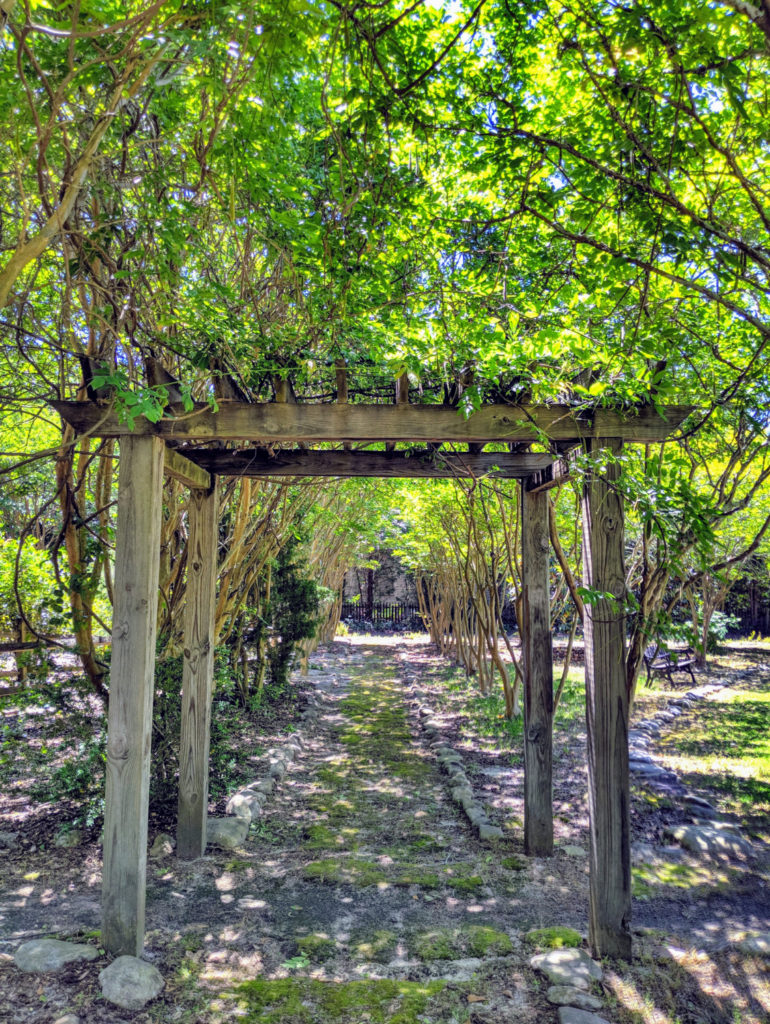
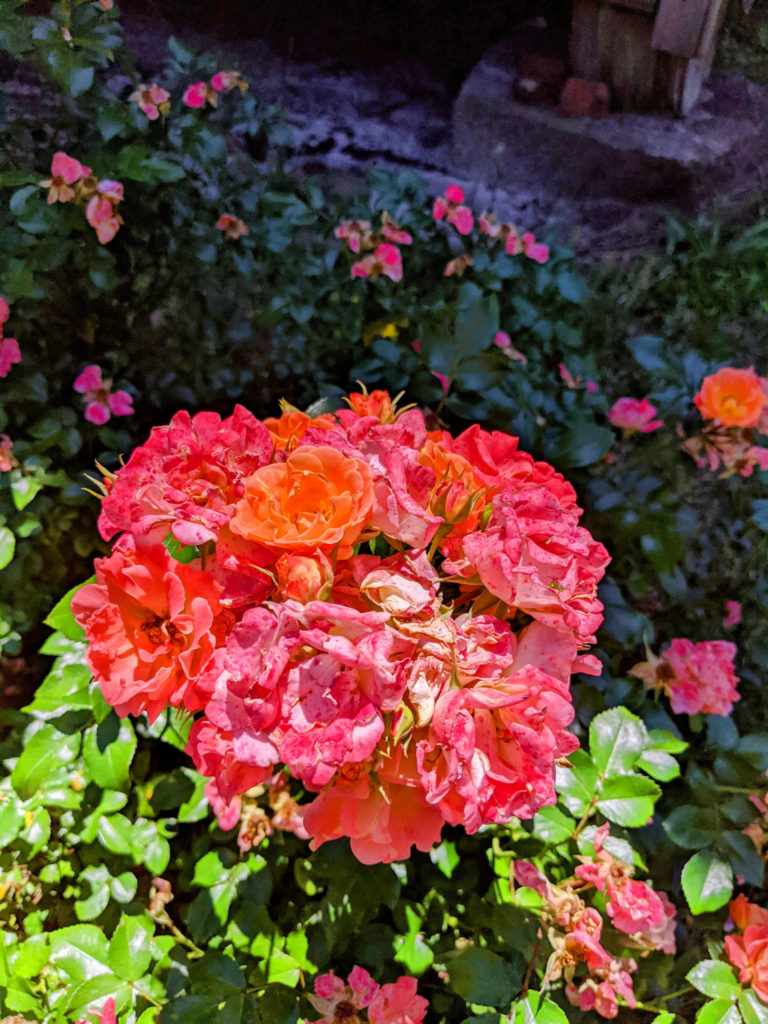
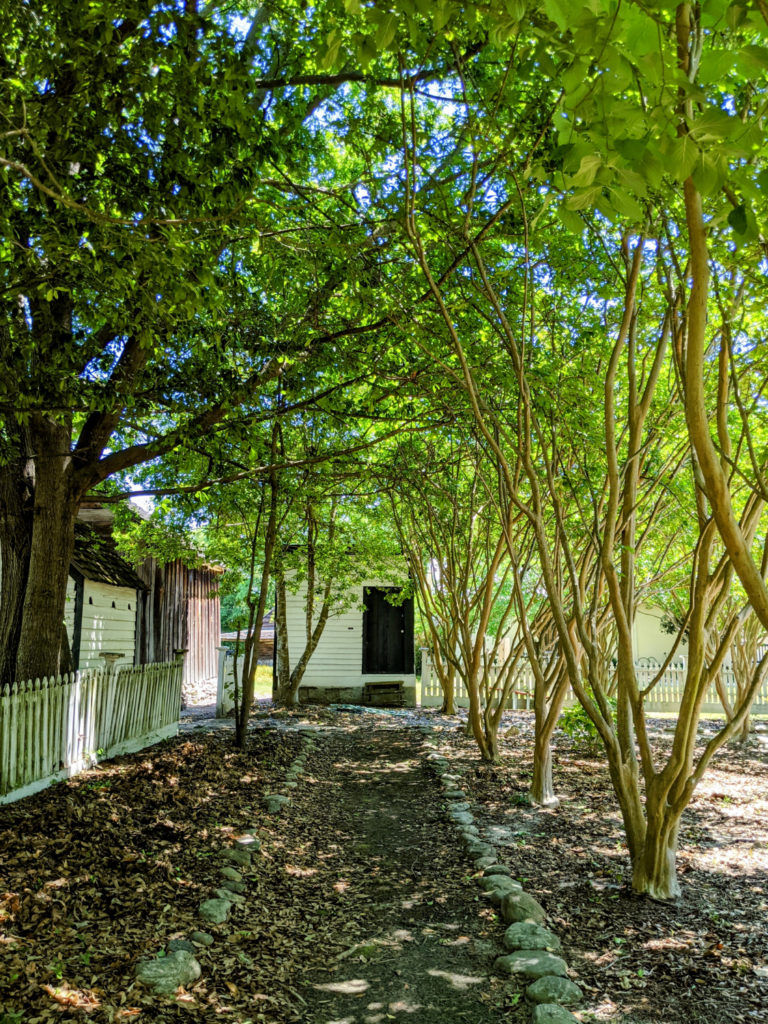
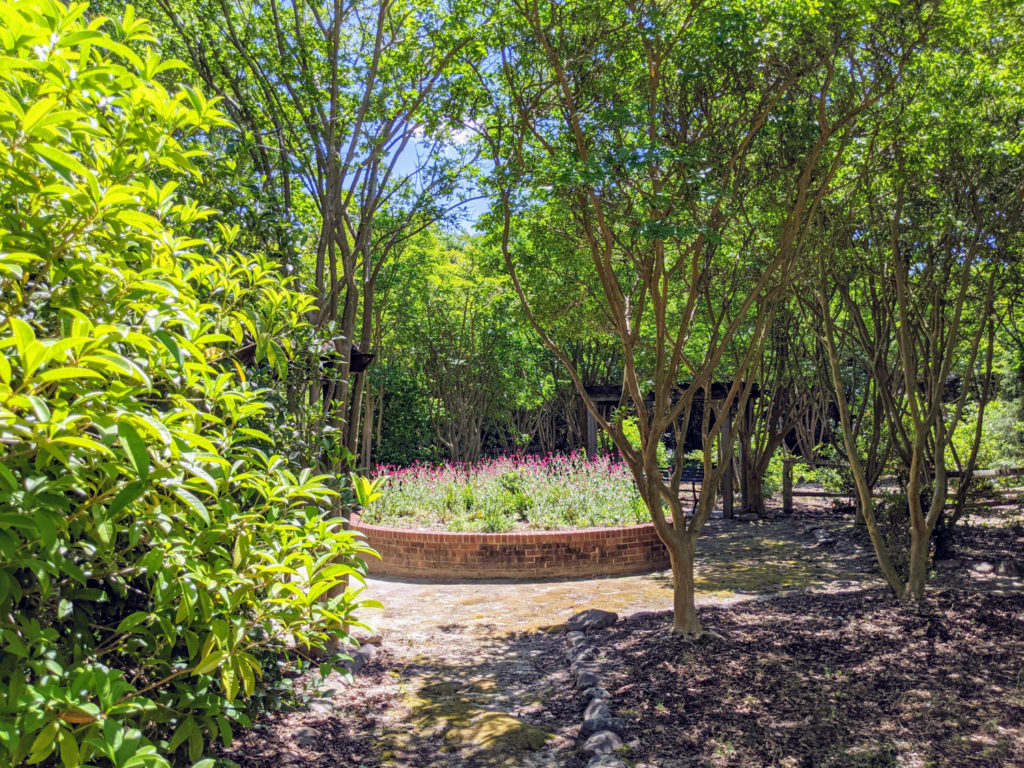
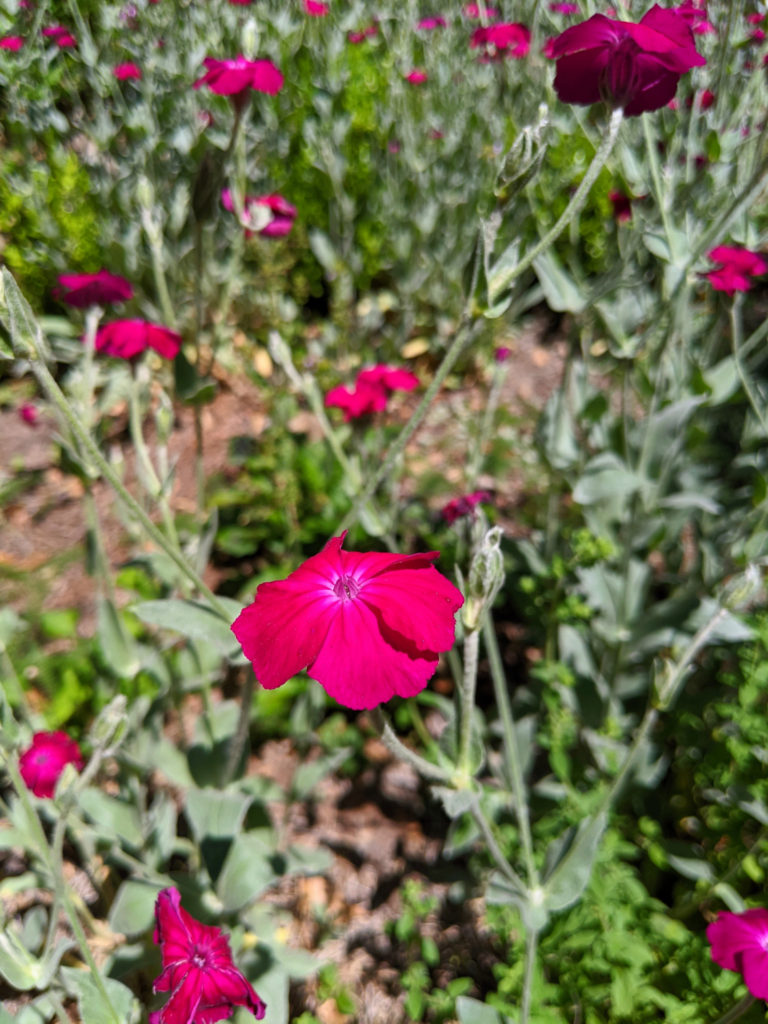
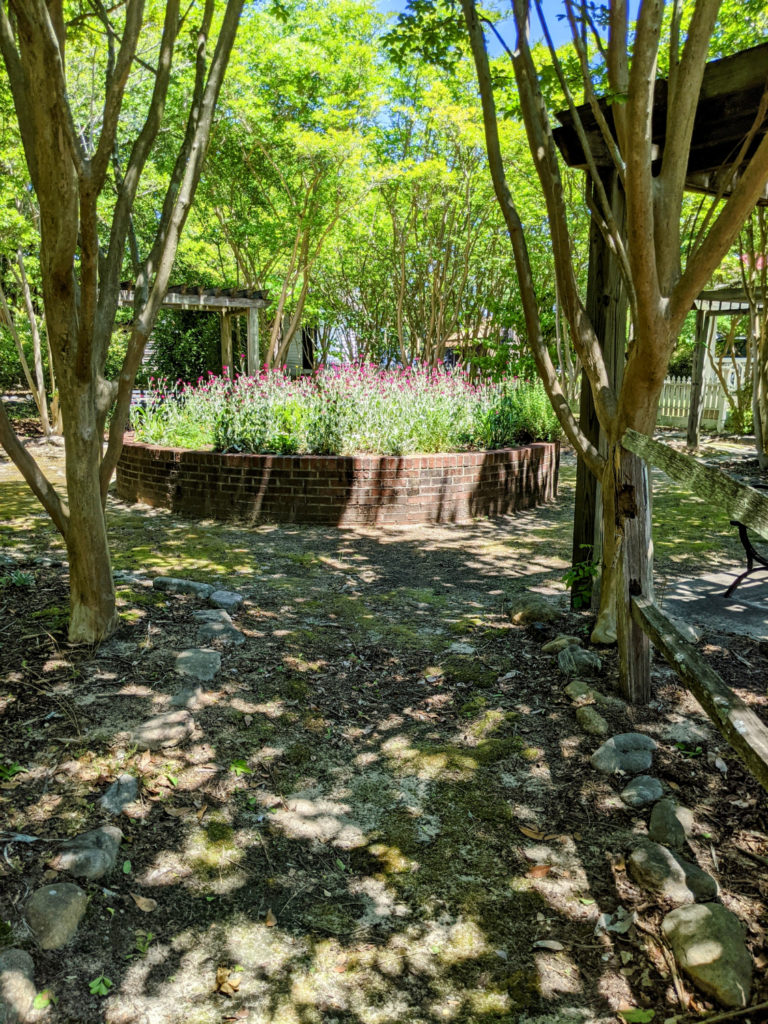
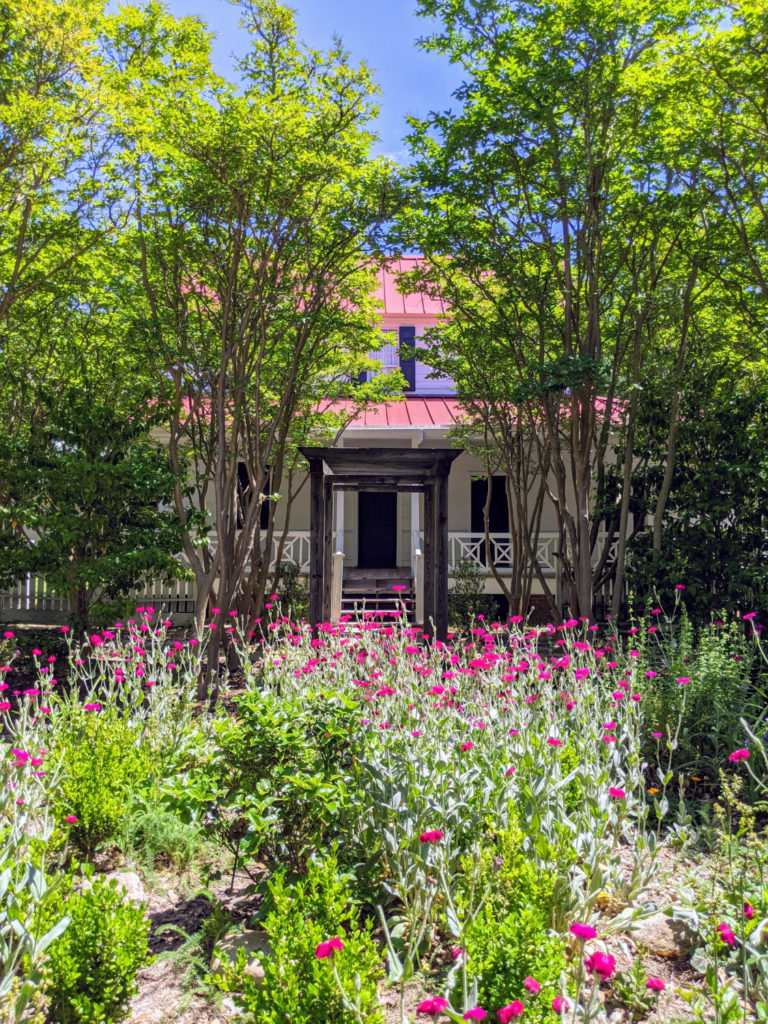
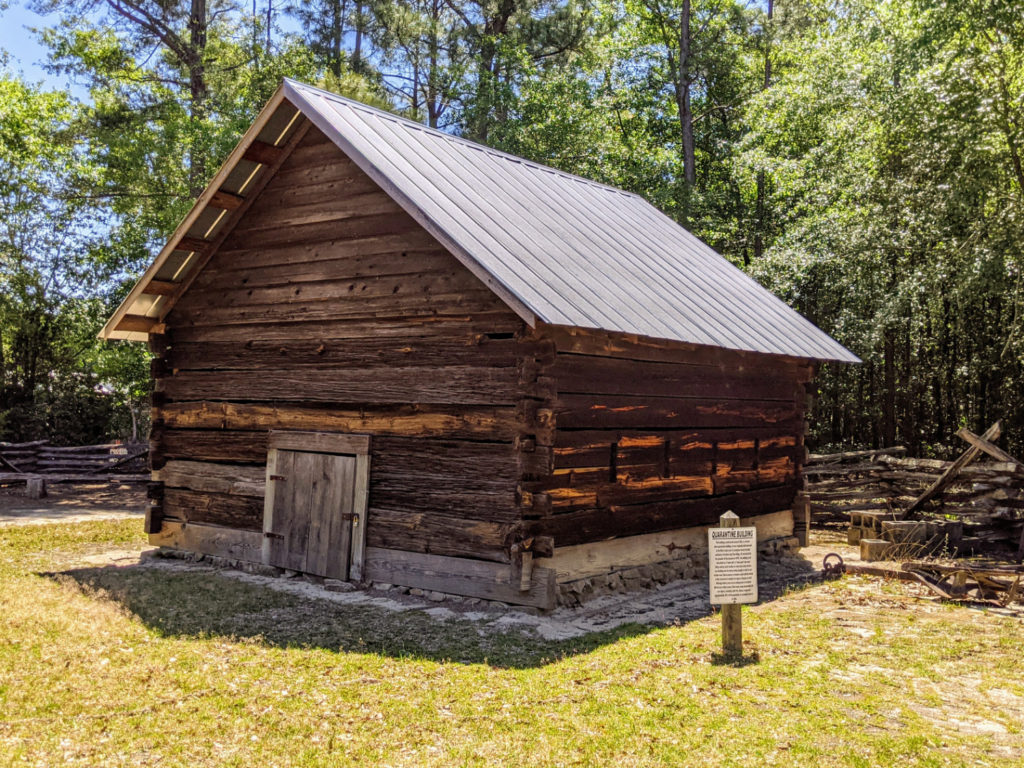
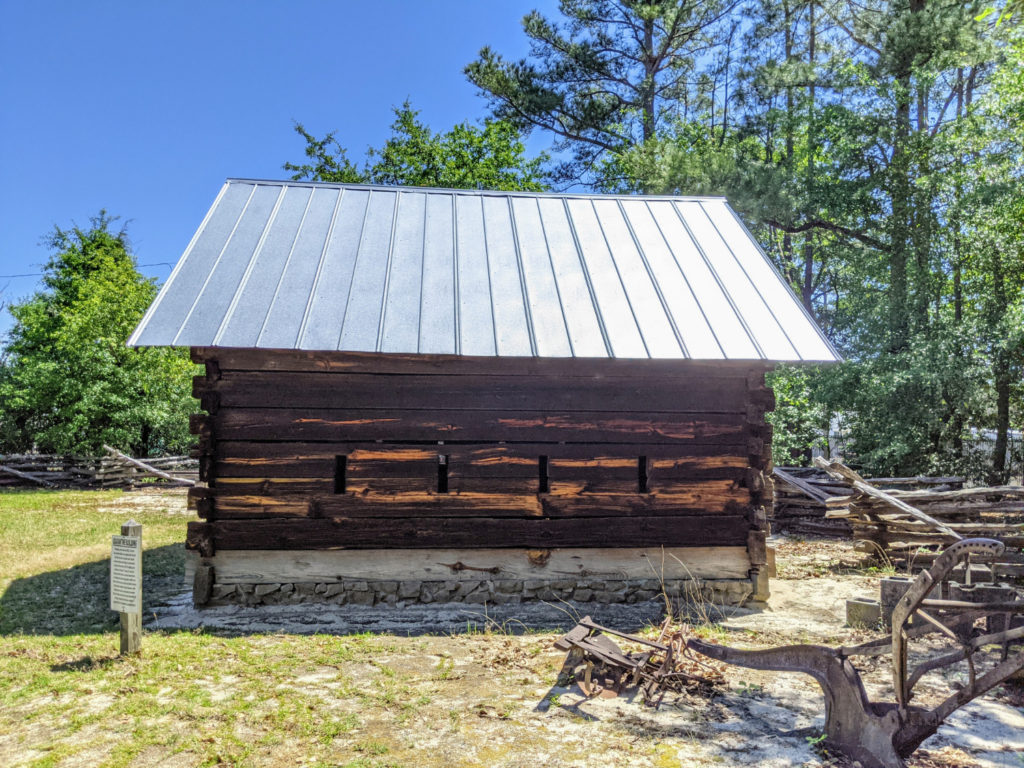
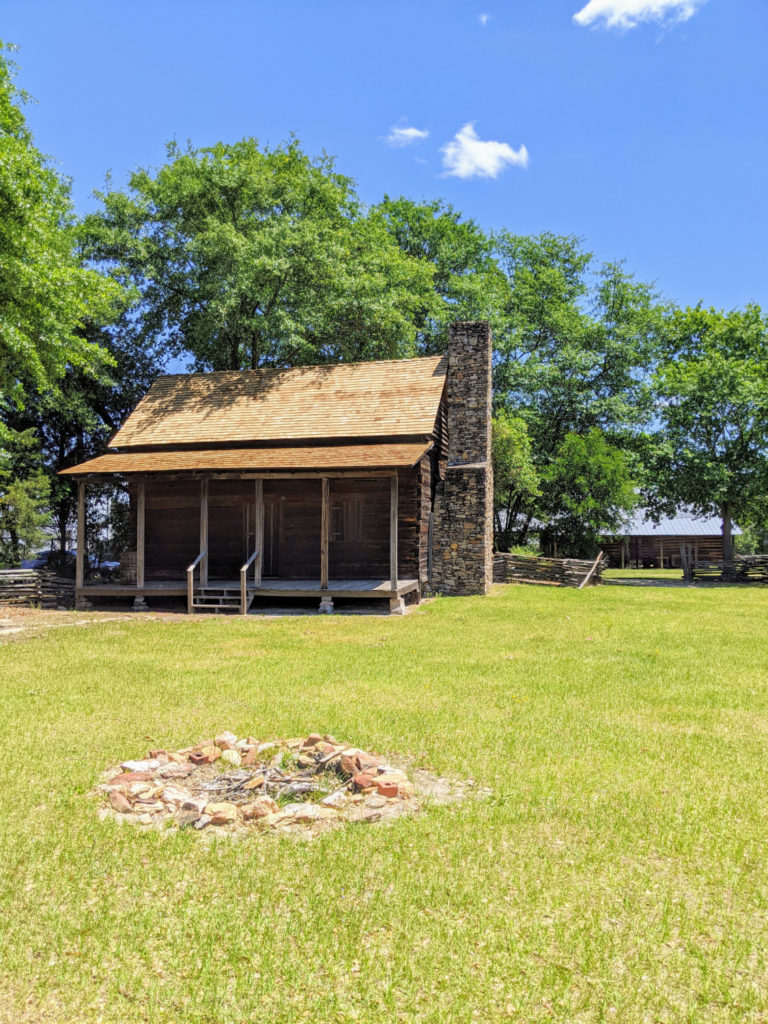

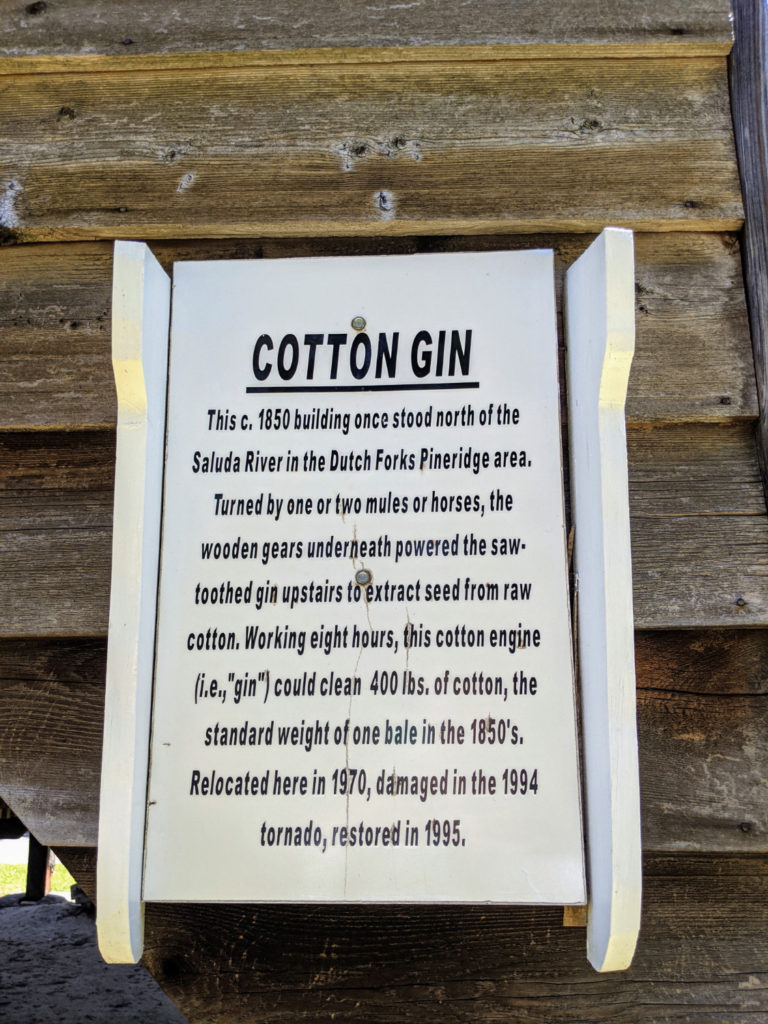
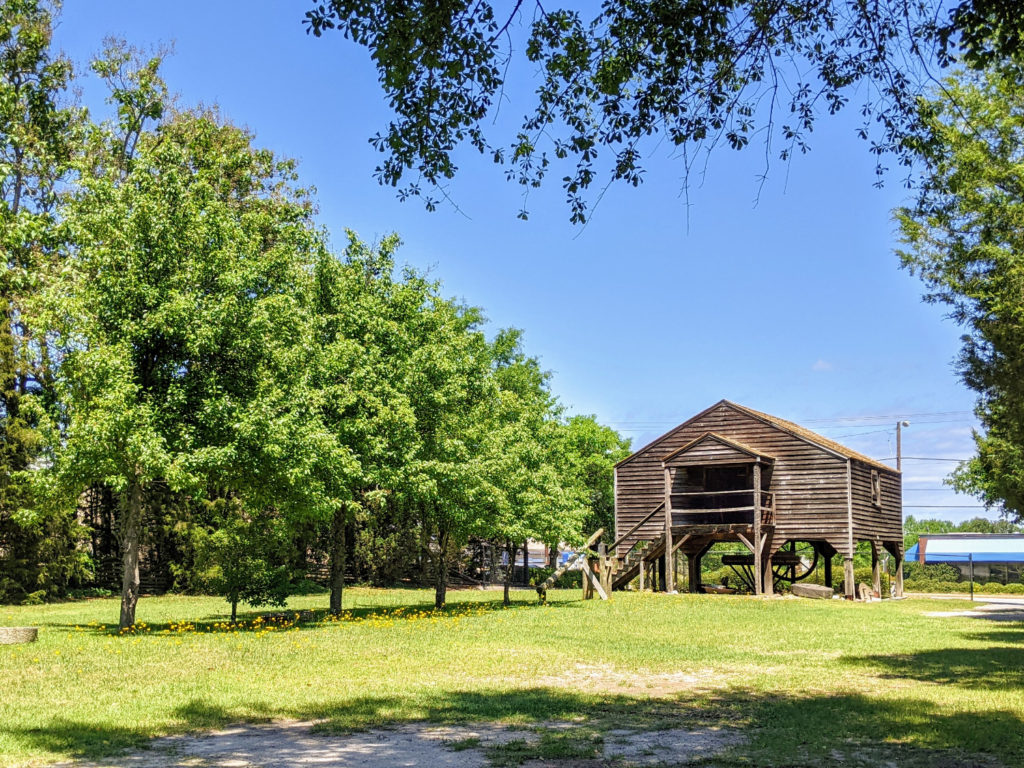
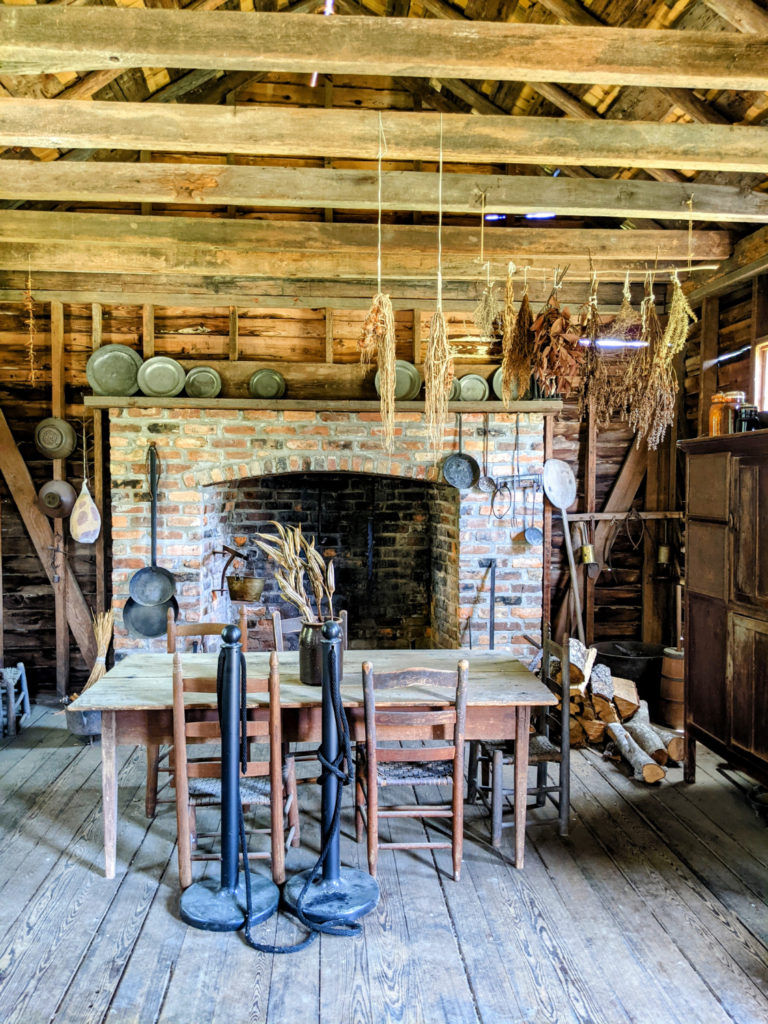
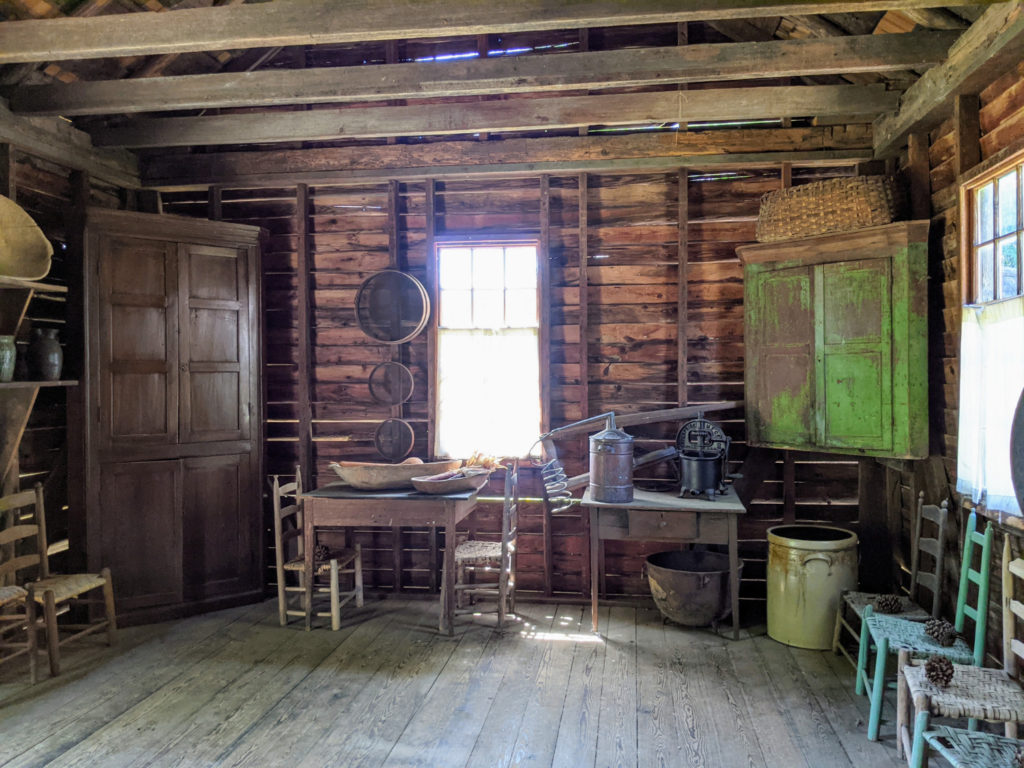
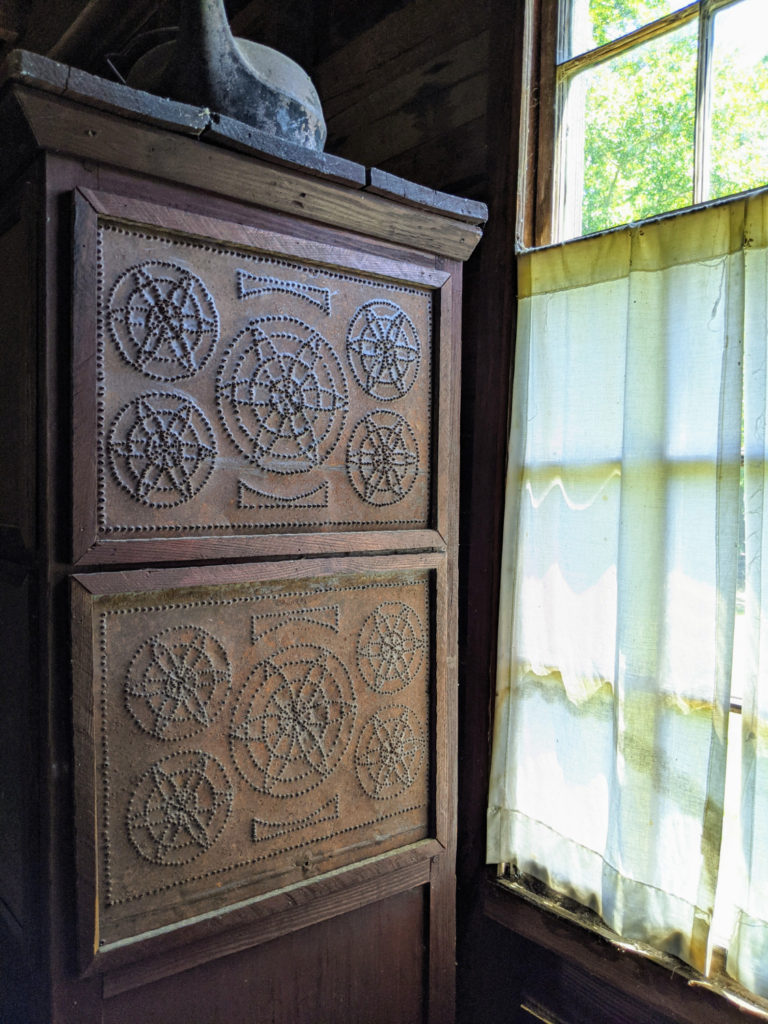
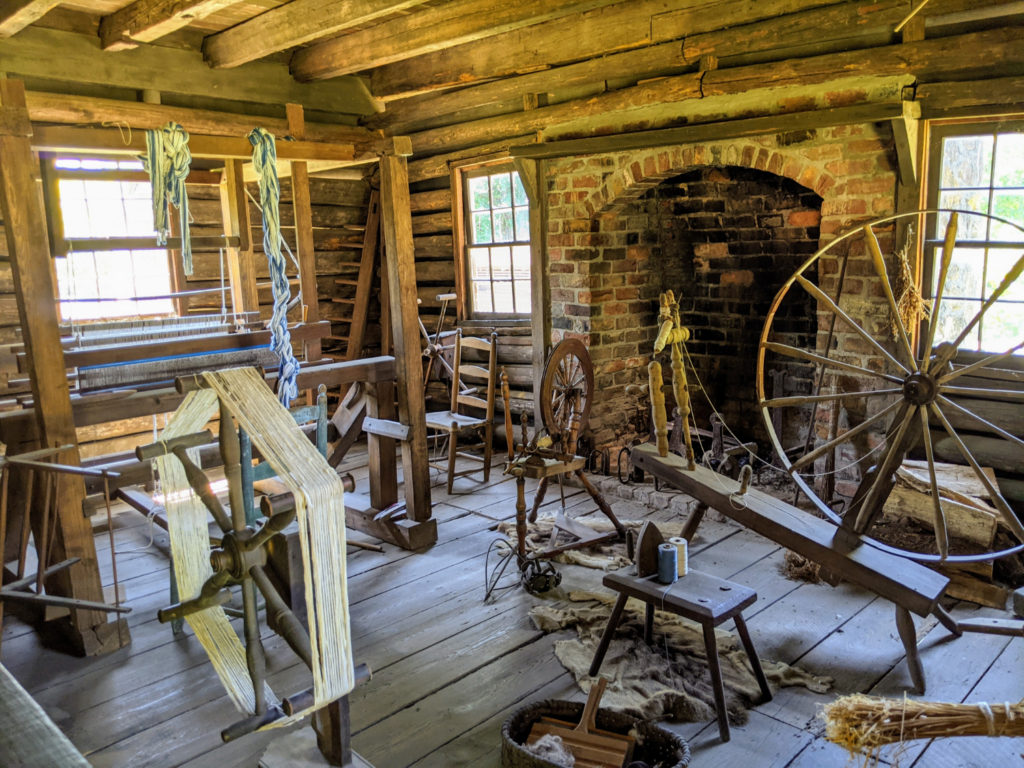
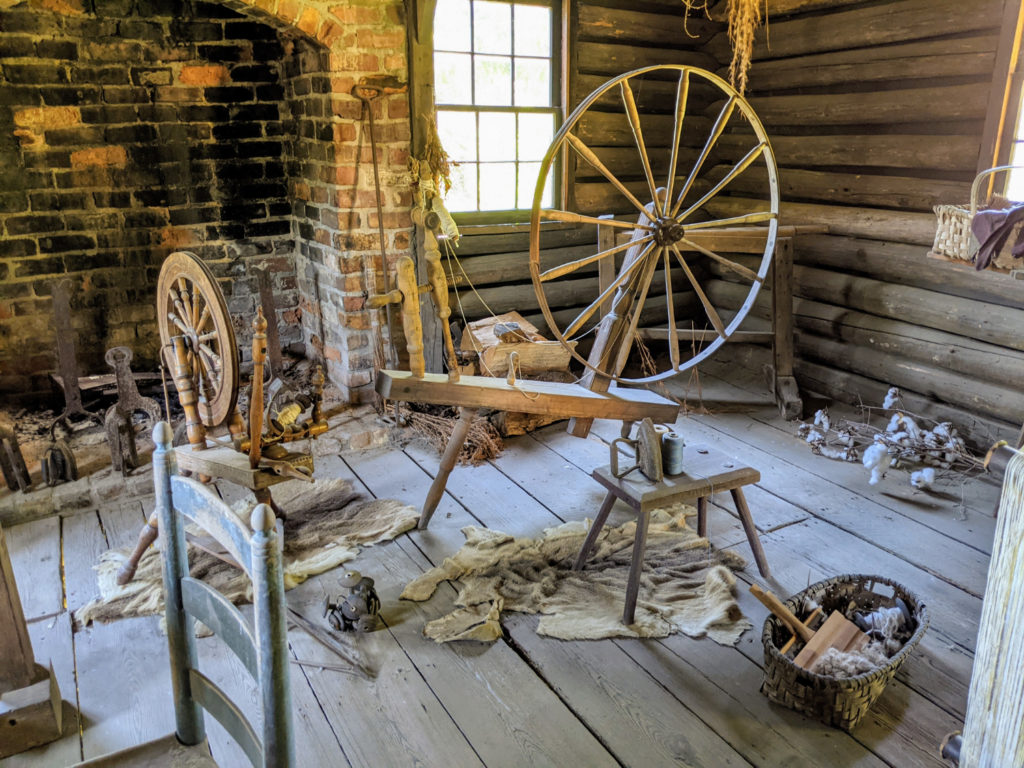
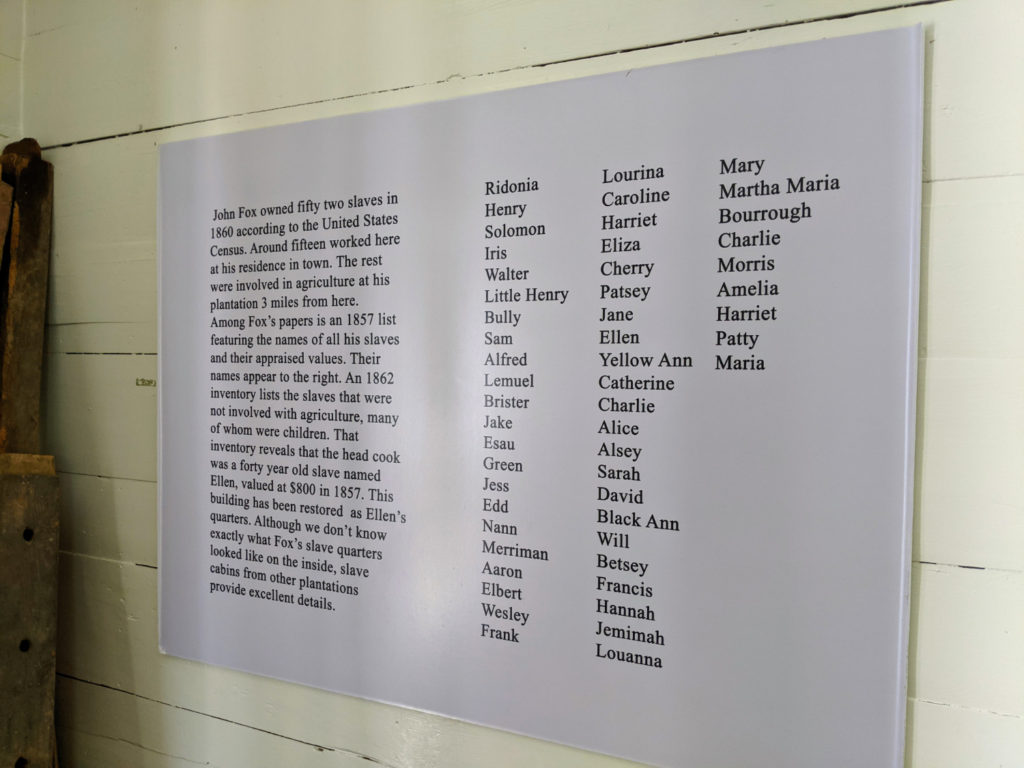
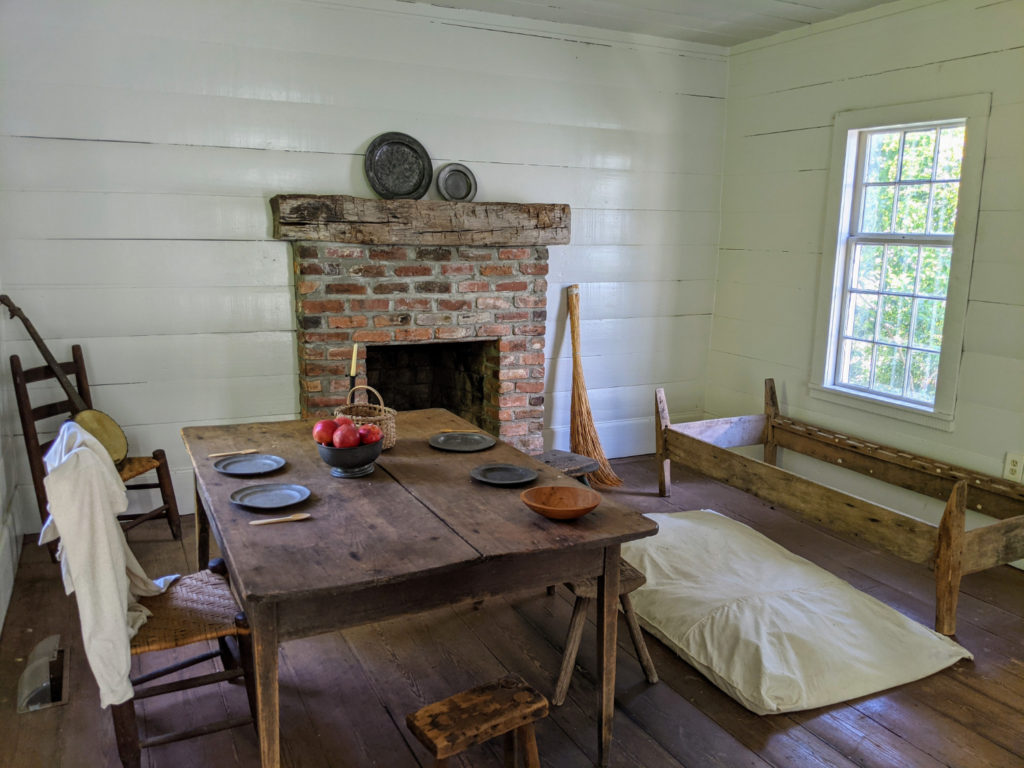
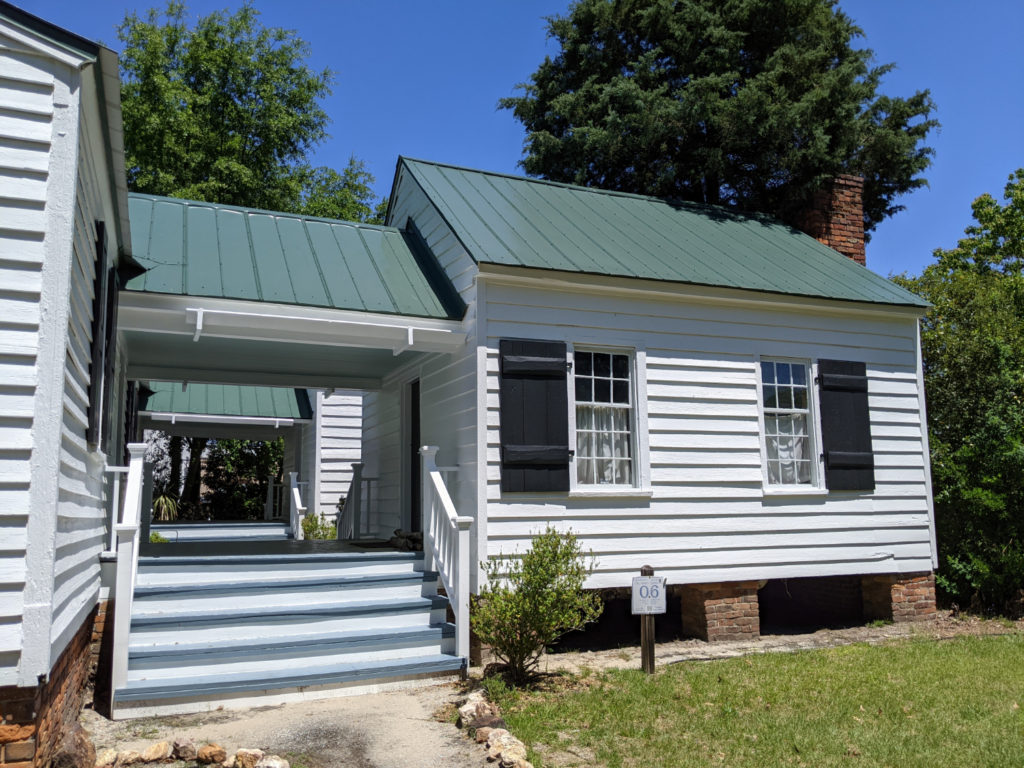
Be First to Comment